THE WINE MERCHANT.
An independent magazine for independent retailers Issue 137, July 2024



Finley’s in Hoxton, left in a precarious position after a daylight burglary, raises £10,000 with a GoFundMe campaign
After a burglary that completely cleared out the shop at the end of May, Hoxton independent Finley’s has reopened thanks to financial support from customers and suppliers.
Sia Smith, who owns the north London independent, was left despondent after the daytime raid on the business. But with the help of a GoFundMe fundraiser she was able to open the hybrid bar and shop’s doors once more on June 27.
“There won’t be all the stuff we used to have, but there’ll definitely be wines to pour and fun nibbles. I’m really looking forward to it,” said Smith, talking to The Wine Merchant ahead of the reopening.
Despite having all the requisite deterrents in place, including CCTV, a roller shutter and an alarm, thieves broke into the Hoxton premises in broad daylight and were there long enough to take not only all the wine, but items including the coffee machine, Coravin, POS system and even the bin. Footage on Finley’s Instagram page shows the carnage they left behind.
Smith was in Australia at the time to attend her father’s funeral, and was alerted to the robbery on her phone.
“That was the craziest part of it,” she says. “It was like a chain of events that made it all worse. I mean, how do you call the UK police from Australia?
“The police attended, super-fast, though, considering that there are much more
serious things going on.
“No one has been caught yet. I think it’s a network of thieves that know what they’re doing because they knew exactly how to manipulate the shutters and things like that. I think one of the hardest things is the mentality of the public when they see something like that. They think, ‘oh, I won’t bother to call the police because they won’t do anything’.”
The value of goods taken was around
£20,000, with £12,000 of that accounted for by wine. “That doesn’t cover just being closed for three weeks,” Smith adds. “GoFundMe was really good. I think we hit the first target of £6,000 in about 19 hours, and now we’re just sitting under £10,000.
“I just wanted to get a thank-you out to everyone. Honestly, I couldn’t have done it without everyone I know. Offers have poured in to help clean or replace things. It’s been a massive team effort.”
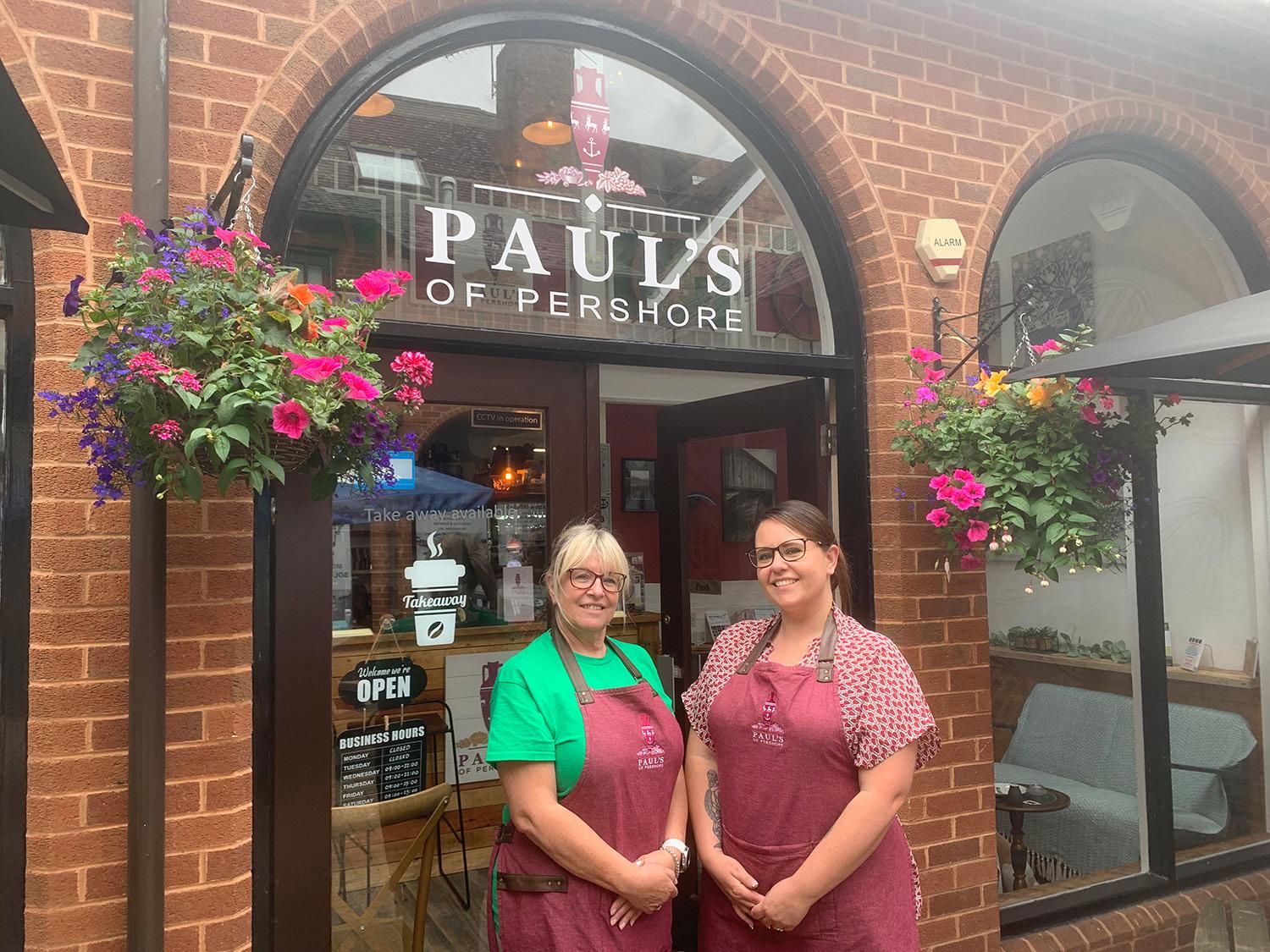
4 comings & GOINGS
New independents appear in Bolton, Worcestershire and Fife
8 david perry
Our man in Dorset makes a strong case against wholesaling
12 rising stars
Wenbo Li at Vino in Edinburgh will have to move on. But why?
15 bright ideas
Sipping and stitching prove to be a winning combination at Vinotopia
17 the burning question
What sort of social media works best for independent wine shops?
20 15 years of vinomondo
Julie Mills reflects on a big milestone for the north Welsh indie
26 merchant profile
Meeting Al Wighton at Alteus Wines in Crowborough, Sussex
44 focus on south america
Three trends that are helping producers to reach new peaks
67 Q&A: Norrel Robertson
The Scottish MW talks Kraftwerk, Asti Spumate and Dundee United

In June, The Wine Merchant led a second trip to Italy in partnership with Cecchi. Our first visit centred on the company’s heartland of Chianti Classico (Primo Colle, pictured above, provides a scenic backdrop to its winery) as well as its project in Maremma. This time, as well as visiting Chianti Classico, we travelled to Umbria to taste the wines of Tenuta Alzatura. Our report will appear in September.




Be afraid of the light
We need to talk about light strike. Especially as so many producers – or perhaps the people who advise them on marketing – seem to favour clear glass.
The Drinks Cabinet is due to open in the village of Aberdour in Fife this month.
Inspired by a recent discussion on Susy Barrie and Peter Richards’ Wine Blast podcast, Diana Thompson, who runs Wine Events Scotland, decided to sacrifice a bottle of rosé she was planning to show at a masterclass.
“It was in a clear bottle so I thought I’d experiment,” she says. “I put it by the kitchen window for a week and was quite horrified on the evening of the event when I opened it.
“It had completely lost all its freshness and vibrant fruit. Instead it was dull and had hints of burnt rubber and classic overcooked cabbage.”
After allowing guests to taste an unspoiled bottle of the wine, Diana passed around glasses of the lightstruck version for them to sniff.
“Only one out of the 26, from the trade, dared taste it,” she says.
“I then did a similar exercise and showed the light-struck wine on our stand during the Edinburgh Uncorked Wine Fair. This time I’d only left it for a few days and the sun hardly shone. Yet the wine was awful.
“To think how many people are drinking wines at barbecues etc which are likely to be spoiled.”
It is, Diana observes, “a subject which doesn’t receive nearly enough exposure”. Which is clearly more than can be said for all those rosés you still see cooking on sun-kissed shop shelves.
On page 25 you can read about Cat Brandwood’s valiant attempt at her first ultra marathon, The Scilly 60. Cat, who owns Toscanaccio in Winchester, battled on despite a broken collarbone. She wasn’t running for a particular charity but if any fellow indies want to make a donation to Dementia UK (dementiauk.org), she’d be very pleased indeed, especially as her friend’s mum recently died after a battle with this cruel disease.
Fiona Allan and her husband Peter already own the licensed village store but have decided to specialise at a separate location.
After a 30-year career as a hospital pharmacist, Fiona has really thrown herself into retail. “We bought our local corner shop three years ago and the part of the business we’ve most enjoyed developing is the wines, spirits and beers section,” she says.
“Our customers have really responded to that and we feel the new shop gives us the opportunity to expand and improve our offering.”
The Drinks Cabinet is on the other side of the village to The Purple Shop, the couple’s convenience store, which will continue to stock a small selection of drinks.
The new premises is a picturesque building, formerly the old post office, and more recently a delicatessen. The deli has relocated to an adjacent unit and stopped selling alcohol.
“The idea is that they have the beautiful cheese and charcuterie, and we have the wine,” says Allan. “We intend to collaborate with them as we have an existing relationship. In a village like ours, it is a case of together we are stronger. The village has a community ethos. People do try to be loyal and shop local.”
The couple are pleased with the support they have received from the trade.
“We approached Boutinot, because of The Wine Merchant reader survey,” Allan says, “and our rep, Sarah Mauritzen, has been absolutely fabulous. We also visited Valhalla’s Goat in Glasgow and Phoebe was so helpful and generous with her time. She recommended wines and suppliers to us.
“We want to be able to offer some really lovely high-end wines but we don’t want

the vibe in the shop to be unwelcoming or intimidating. We want to offer wines for all, what people on our doorstep need, and that will include a range of entry-level wines we are proud of.”
After receiving her shop keys, Fiona attached them to her personalised keyring from Katie Jones’s Old Vines project. “I met her at an Inverarity Morton tasting and completely fan-girled her,” she says.
Fiona says completing her WSET Level 2 made her realise that “the more you learn, the more you don’t know, but that’s what makes it so exciting”. She adds: “For us this is a big leap of faith and we’re full of excitement and trepidation.”
• Legendary London spirits specialist Gerry’s of Soho is now owned by Tesco following the takeover of its parent company, Venus, by Booker, which was acquired by the supermarket giant in 2018.
• The Whisky Shop Dufftown in Speyside ceased trading in May. Owner Mike Lord had been running the business for almost two decades.
Reno Wines in Wymondham, Norfolk, closed last month. In its 10 years of trading, owner Chris White expanded into wholefoods and deli, specialising in refill products.
“It’s not that I’m retiring, or we’ve chosen to close, it’s simply that there wasn’t enough money coming in,” he says.
“It had been doing really well, but I think we are just a classic example of a small town with falling numbers. We’re seeing fewer and fewer people coming in to replace the people who have sadly passed away or moved away over the years.
“I guess like a lot of people we got hit by Covid and Brexit and all sorts of things that just chipped away at some of the
processes we used to take for granted. It just got to that point where there was a bit of a red flag that if we didn’t stop soon, we weren’t going to have enough money [to cover liabilities]. I wanted to make sure we settled our bills and paid everything off and walked away honourably.”
White believes the environmental agenda has suffered in the cost-of-living crisis.
“We’ve lost quite a few of our eco sales purely because it’s become more expensive now to buy one of our lower-priced refill wines than a bottle of wine in Morrisons, which is only half a mile up the road.”
Bowing out after a ‘wonderful’ career
Peter Law at Wine Wizzard in Castle Cary, Somerset, is selling up and retiring.

“After more than a quarter of a century my landlord has sold the building and the new owners wanted me out,” he says. “But I’m 80, so I decided it’s time to stop anyway.”
Looking back over his career in the wine trade, Law says: “I’m very lucky. I worked with six MWs at a time when there were only 60 in the world. I was number two at the beginning of Oddbins, working with Ahmed Pochee.
“I had a wonderful time buying in France, Italy, Spain, meeting fabulous people and being taken out to the best restaurants in France. Sometimes eating in very grand châteaux and sometimes just in the kitchen of a farm. But all fun.”
Law is selling the registered trademark of his house wines (which sell in excess of 8,000 bottles a year), the goodwill of the company, his stock and two web domains.


Pershore, a Georgian market town on the River Avon in Worcestershire, is home to a new wine merchant.
Paul’s of Pershore opened in May and co-owner Paul Boatright-Greene says it is offering something unique to the area.
“The high street is predominately made up of independent shops,” he says, “and there is nowhere else locally where you can get premium wines.
“After 14 years in teaching, I’d had enough of the education sector and I wanted to be my own boss. I’ve always been a lover of wine and the opportunity came up in the town to take over a premises which would lend itself perfectly to a wine bar.
“I would say 90% of sales are on-site drinking and about 10% is retail. I don’t think people realise that they can buy to take away, so that’s my next challenge: to emphasise that I’m a retailer with an on and off-licence.”
Boatright-Greene describes Pershore as affluent, with a “mix of age groups, including a lot of older people with quite expensive tastes”.
“There’s been a big push from the town council as well as the district council to promote local independent businesses, which is great for us,” he adds.
“We just had our first artisan-style street market and that’s scheduled to happen the first Saturday of every month.”
The premises is laid out over two floors and has an outside courtyard area, so there is room for around 50 covers. A menu designed to complement the wines will be prepared by an apprentice chef.
• After 36 years of retailing, Wimbledon Wine Cellar in London is closing its shop to become an online-only business. Owner Andrew Pavli has announced his intention to open a “bespoke tasting room”’ some time early next year.

The Bottle of Hastings in East Sussex is on the market. Owner Victoria Wilken is relocating to Norwich with her family and hopes that all the work she’s put in over the past year will pay dividends for the new owners.
“I was going to keep the shop on and hire somebody,” says Wilken, “but I just think it is too much to try and manage a business remotely. It’s not an easy business, but I was growing and investing. I was becoming a bit of an orange wine specialist and had a big following for local English wines as well. I feel really proud of it because I think people can see it’s a thriving business that still has lots of potential.”
Since taking over from James Hickson
and Gina Hewitt in 2023, Wilken revitalised the business with extended hours, regular tastings and events including a book club and open mic nights, as well as a cheese and deli offering.
Wilken reports that she is in talks with potential buyers, but nothing has been finalised as yet. Meanwhile, the shop in its current iteration is scheduled to close its doors this month.

Norvines opened in Westhoughton, Bolton, last month. Owner Natalie Norvall will be running the business with her dad, Joe Johnson.
Born and raised in South Africa, Norvall says her shop inevitably has a South African bias. “I just think they are such wonderful wines for great-value prices,” she says.
“I would say about 25% of my range is South African, but we’ve got a nice collection from all over and I’m excited to see people’s reaction to the wines.”
Norvall has got off to a flying start with her relationships with suppliers.
“Boutinot has such a huge collection of loads of small wineries; they are amazing
to work with,” she says.
“For South Amercian wine, Mark at Condor has been outstanding. Marta Vine is great – you can’t help but get absorbed in that passion, and my Portuguese wines are beautiful.
“Bancroft has been absolutely wonderful for my real prized possessions of South African wines, as well as one from Greece and one from Cyprus. I’m thinking that will be really something when those bottles go off the shelf.”
Norvines is situated inside the Provenance food hall where the neighbouring shops include a butcher, a baker, a delicatessen and a patisserie.
“It’s all been a bit of a whirlwind,” says Norvall, “but it’s very exciting and this is a good way for me to start because wine obviously goes hand in hand with all those things.”
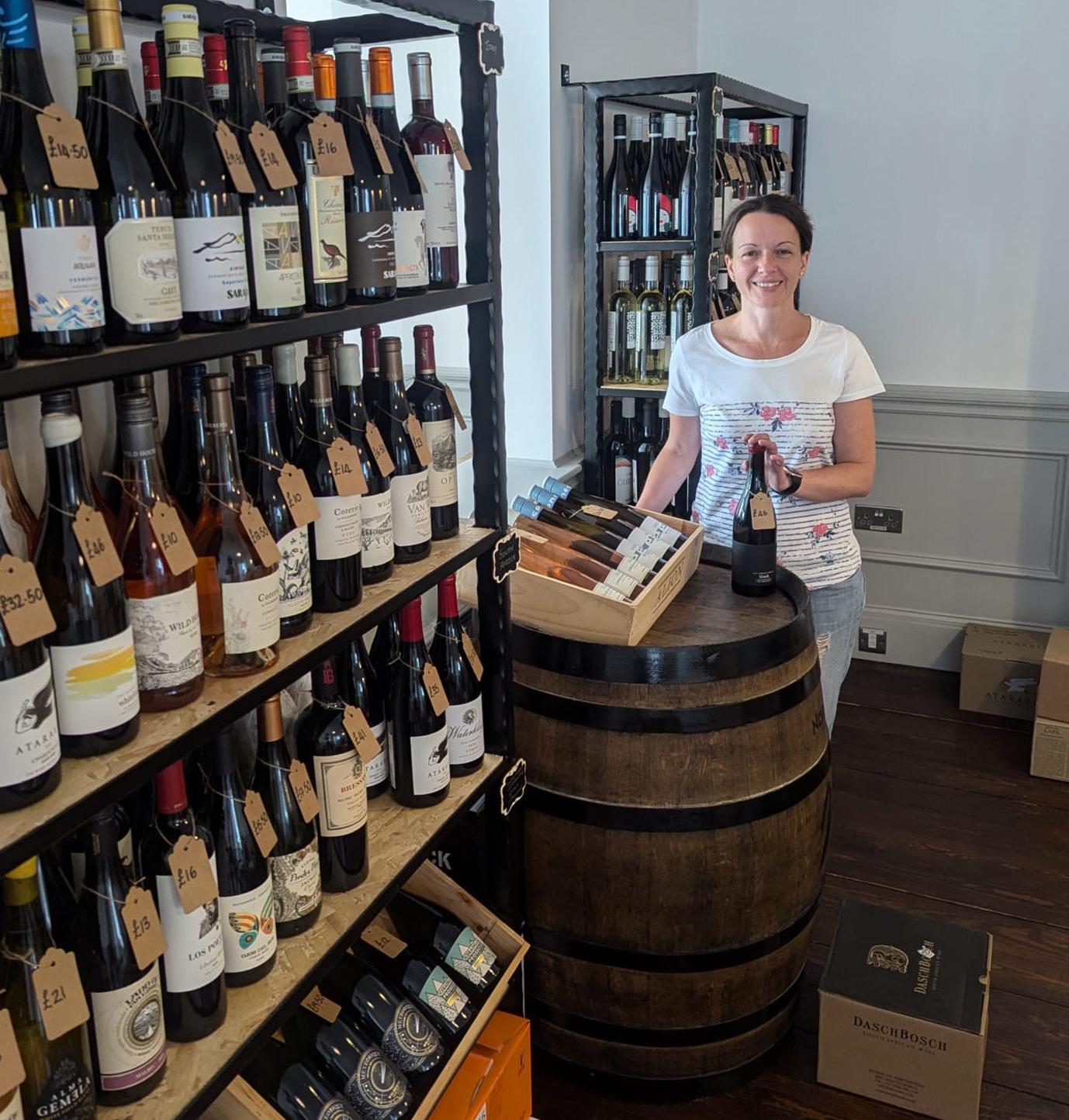

A




Where is the world’s biggest gin festival? No, not Henley. In fact, it’s Copenhagen. The Danes have gone bananas about gin and a new way of drinking it that blows away G&T conventions, though it’s mangos that feature heavily in it, not bananas. The Gin Hass was created in Odense by the freelance bartender Kim Hass, who was so overawed by its popularity that he made Gin his middle name and registered his cocktail as a brand name. He’s also created his own brand of mango syrup as a result, though wide availability makes Monin the brand to head for in the UK.

4cl gin
4cl mango syrup
Lemon soda (Sprite I guess)
Fresh lime

Fill a tumbler-style glass with ice. Add gin and lemon soda, leaving enough room to pour the mango syrup on top. Garnish with the lime.


Once or twice a year someone comes into the shop and tells me they want to buy wine for their restaurant/café/village shop. What wholesale price can I offer?
They want me to let them have loads of wine at a knockdown price, which they might eventually pay me for. They are usually disappointed that I’m not thrilled by the wonderful opportunity they are offering me.
I’ve tried to avoid being a wholesaler, mainly because I’m not an importer. No restaurant, with any sense, wants to list a wine at £36 which can be bought in the local wine shop for £12, so they generally want unique stock not found in the offtrade.
We did, sort of, import our own-label house wine but really it was imported by someone else and we piggybacked on their bulk orders.
Originally, I would add a couple of pallets of back-label-only when the local importer was bringing his in, and it would be held at his warehouse. The thinking was that the extra volume would reduce his costs. It was difficult to get the mix exactly right, so we agreed that I’d buy a “virtual pallet”, pay up front and draw it down as required. After a while we agreed that I’d just buy it as required and have it delivered. The upshot is that they made about a penny a bottle. Trying to hold my wholesale price means I made about two pence a bottle. We now have three or four regular “wholesale” accounts who take our house wine. We also retailed these under our
own brand, “Colline d’Or”: Shaftesbury is famous for Gold Hill and the labels have a cartoon of the Hovis lad but with wine, rather than bread, in his bicycle basket. They are everyday Pays d’Oc Merlot, Sauvignon Blanc and Cinsault rosé. Initially it seemed like a good idea. As costs got higher, and with the added cost of printing labels, they became more expensive than entry-level stuff I could buy anywhere.
We used to retail them at £7.50 but now £10 would be more realistic. The margin was low, and even lower by the case. Most people bought by the case. It was no longer a good idea to sell them instead of other full-margin stock, so I took them off sale in the shop. I continued to sell them to the local arts centre, our village hall, a local café/restaurant and my old geography teacher. They all collect and pay up front.
The solution to higher costs was to switch supply to Bulgaria at 11% abv – overall 65p a bottle cheaper, but I had to rebrand to “house wine” rather than “Zlaten khŭlm”. I gave the little café/restaurant at the top of Gold Hill the choice of the same wine or the same price. He went for price, but after six months realised he was selling Bulgarian as French and asked if he could have the higher price rather than change his list.
My old geography teacher only drinks French wine and I haven’t had the heart to increase the price.
There is one other customer, who lives around the corner from the shop, and has 18 bottles of unlabelled Bulgarian
house white every three or four weeks. We started delivering to her in lockdown and have continued without increasing the price. It’s now probably below cost but I don’t mind; she turned 100 last year so it’s not like it will go on for ever.
The upshot of this is that I now have six different wines which I no longer sell in the shop, but for which I still have to hold reasonable stock.
And that, in a nutshell, is my issue with wholesaling. You have to hold stock you wouldn’t normally buy and sell it at a lower-than-normal margin. If you do it seriously, you can add the problem of giving credit and hoping everyone pays on time, or at all. So you are exposed to risk for wines you don’t want that make you no money.
We once supplied wine to a lovely little café/restaurant in a walled garden. I didn’t want to, but they insisted, and they were on the way home. The wine they wanted came from a supplier who also had a big on-trade business. Every time I delivered a case I had to re-pack it into a blank case that didn’t have the supplier’s website printed all over it.
Now there is a much bigger problem. One that is another Brexit bonus. The government (the one at the time of writing anyway) has decreed that all wines must show the name and address of the importer on the bottle. Whoever thought that was a good idea? Some of my customers like to think that, on my one day off, I dash around Europe visiting vineyards. I usually, but not always, put them right.
Now they can pick up any wine and see who imports it. The next step is to look at that supplier’s website and see if they can get it cheaper directly. That, I believe, is why you don’t see many toy shops and book shops on the high street anymore.
This is a minor irritation for me as a retailer. But I imagine it is a very real headache for anyone with a significant wholesale business who isn’t also the importer.
David Perry is the owner of Shaftesbury Wines in Dorset

There is a an awful lot of English fruit coming on stream in the next decade and it can’t all go into traditional-method fizz. Domestic Charmat has something of an image problem, but here’s an example of how it can be an attractive proposition, both in terms of its presentation and its crisp, summery style.
RRP: £25 ABV: 12.5%
Hayward Brothers (020 7237 0576)
haywardbros.co.uk
This was Royal Tokaji’s earliest recorded harvest, with the rare Kabar grapes picked on August 6-7 after weeks of intense sunshine. It was a decision that paid off, as the rich fruit character is kept honest by zingy acidity. Endless layers of glorious flavours, and a quirky hint of fresh strawberries.
RRP: £53.99 ABV: 10.5% Fells (01442 870900) fells.co.uk
Lebanon has no cidermaking tradition, but Soha Frem may be about to change all that. Her dessert apple farm, founded by her grandfather, has struggled since the war in Syria. So she came to Gloucestershire to study how to make cider, and now her crop is being channelled into impressive, delicate concoctions like this. Soha’s a quick learner, and could be a teacher too.
RRP: £17.50 ABV: 7.5%
Lebanese Fine Foods & Wines (01903 892886) lebanesefinefoods.co.uk
It really feels like Cape Chenin Blanc is hitting its stride these days, and this joyous amphora-fermented bottling was possibly too good for the al fresco fish and chips we paired it with. But its bready richness, lemony tang and salty finish make it a versatile food companion. Another winner from the Project Z range.
RRP: £41 ABV: 13%
Hatch Mansfield (01344 871800) hatchmansfield.com




The Graciano component in this sumptuous Rioja Alta blend only amounts to 5%, but it feels like more, given how fresh and aromatic the wine is. Norrel Robertson MW guided the project, and was keen to showcase the inherent character of both varieties. Plenty of violets on the nose, with liquorice and red fruit on the palate.
RRP: £17 ABV: 14%
Awin Barratt Siegel (01780 755810) abs.wine
Sauvignon is a variety that has got tangled in a web of contradiction and misconception, and much of what we encounter is overwrought and overbearing. Here, it’s stripped back to its bare essentials, and we’re reminded that it can give gentle, unshowy wines, with tender fruit and a fresh mineral character.
RRP: £16.25 ABV: 12.5%
Hallgarten & Novum Wines (01582 722 538) hnwines.co.uk
The Brunier family of Vieux Télégraphe acquired this 30ha Ventoux estate in 1986 and joke that this is one of their “house wines”. A Grenache-led blend, with Syrah, Carignan, Cinsault and Mourvèdre joining the fun, it’s a delicious, full-bodied, vigorous red, conjuring the sunshine and wild herbs of southern France.
RRP: £18.99 ABV: 14.5% Cachet Wine (01482 638888) cachetwine.co.uk
Bedoba – meaning “day of luck” – is made from Saperavi grapes grown in Georgia’s Kakheti region. Fermentation and ageing sounds like a complicated affair, involving qvevri, vats, barrels and stainless steel. But winemaking in these parts is an ancient art and the finished product is luscious and pleasantly rounded, and laced with black fruit, pepper and herbs.
RRP: £18.99 ABV: 13.5%
Liberty Wines (020 7720 5350) libertywines.co.uk





FORMERLY A BUYER AT SALUT WINES IN MANCHESTER, BOB HAS BEEN WORKING AT TOP SELECTION FOR TWO MONTHS AND IS RESPONSIBLE FOR THE NORTH OF ENGLAND, NORTH WALES AND SCOTLAND
I live in Warrington, Cheshire, and while it only takes me 10 minutes to get to the middle of the countryside, I also have great access to the motorway networks, so in terms of me getting out on the road, it’s brilliant.
I worked at Corks Out for a long time where I learned a lot from Ruth [Yates]. When I first joined we were retail-only and then we started along the hybrid route, got the Enomatics and the business started to pivot. Ruth was great in terms of learning about the importance of margin. She really drilled that into me.
We have a growing reputation for California,
but we have a truly global line-up.
Our Bordeaux and Burgundy range is also very strong and we have some Italian classics
After five years at Salut Wines in Manchester, I felt it was time for a new challenge. I’ve got many years’ experience in independent retail, so I think it stands me in good stead for this role. Taking on a region where we don’t have very many accounts at present is just the right thing for me. I’m glad I’m not inheriting someone else’s patch and that I can really make my mark on it.
For independents who aren’t familiar with our portfolio, when they hear Top Selection their thoughts might go to California. Yes, we do have a growing reputation for our California portfolio, but we have a truly global line-up. Our Bordeaux and Burgundy range is also very strong, and we have some Italian classics, such as Baroli in Piedmont, who make amazing Barolo, and we have Egon Müller from Germany, one of the best fine wine producers in the world. For me it’s about getting out there and giving people the opportunity to discover this really exciting portfolio full of wines that offer diversity, value for money and quality.
I am particularly excited to introduce Domaine du Peras to my customers. They over-deliver in terms of value. The white from the La Guerre des Bouchons range is brilliant. It’s a Viognier-Chardonnay blend, fresh and clean but with a little bit of texture from the Viognier that gives it a bit more complexity. Just amazingly good value and it sits at around £15 on the shelf.
Prototype Lodi Zinfandel from Precision Wine Co, which is perfect for indies because it’s everything you want from a Californian wine. It’s not jammy or sweet, but it has that ripe fruitiness.
My previous trip to California was blighted by pigeons. I was booked on a wine trip a few years ago and the plane I was due to catch from Manchester was grounded because its engine had been damaged by a flock of pigeons, so I didn’t even make it as far as Heathrow.


Another wine that’s really impressed me is the Fontanassa Gavi Ca Adua. It’s got minerality, a little bit of creaminess; it’s really aromatic and complex and it retails at just under £20. Then there’s the

I’ve really enjoyed getting out and about to see first-hand all the exciting things the independents are up to and how they are developing their businesses. Getting the wines on to customers’ shelves and into their customers’ glasses is really important to us. We want to make things easy for people, so our minimum order is pretty reasonable.
Half of my weekends are taken up with things like swimming lessons, tennis and football with my son, who has just turned four. He and my wife support Liverpool and in theory I support Bradford City, but they’re rubbish. I really enjoy watching horse racing as well. My father-in-law was a bookmaker so watching it with him is a whole different kettle of fish because he knows what he’s talking about.

One of the many joys of wine is cultural exchange, so it is immensely frustrating not to be able to retain foreign employees because of work permits and accompanying red tape.
On the bright side, Andrew Lundy at Vino in Edinburgh is happy to nurture the talents of Wenbo Li. He knows that Wenbo won’t be around for long, but meanwhile, he can reap the benefits of having a versatile and valuable member of the team.
“Wenbo is from China, and he came to the UK to study fine art,” says Andrew. “Before that he had worked a couple of vintages in California and his wine knowledge is phenomenal. He couldn’t be any more focused. He’s always got his head in a book, learning something. He’s really into classical music and I don’t know what his future plans are, but if I found out that he had a themed wine bar where he did flights paired to certain synapses, I would believe you 100%.”
Wenbo’s linguistic talent has also impressed Andrew for its contribution to customer service.
“I was down in the cellar one day, when I heard a commotion from the shop,” Andrew says. “There was a Spanish woman who couldn’t speak any English and she sounded quite upset. Before I could intervene, Wenbo just started talking to her in perfect Spanish and sorted everything out. He’s a really sweet guy.”
While in the United States, visits to vineyards in Sonoma and Napa resulted in Wenbo ditching his studies in comparative literature in favour of a degree in viticulture and oenology. After completing his degree, he worked for a couple of years in a winery in California, where he had plenty of practice speaking Spanish with his mainly Mexican co-workers.
Without sponsorship to allow him to remain in America, Wenbo came to the UK to continue his education. “I came to the University of Glasgow specifically for a programme about applied science and art,” he says. “Winemaking is strictly chemistry and microbiology and for the masters I wanted to explore another field.”
Flexing his more romantic sensibilities, and having just returned from holiday (wine tasting in Santorini, sightseeing in Naples and Rome), he describes the parallels he sees between art and wine. “If we think about the vocabulary of wine, and words such as structure, texture, colour … all these same words apply to describing art. I like understanding wine as a unique embodiment of beauty, such as

painting, sculpture and music,” he says.
“Working in wine retail gives you a panoramic view of wine. It’s like you’re standing on a hilltop and looking at all the wines from different countries, different vintages, different varieties. That’s why I really enjoy this role, but I will have to move on because, just like with the US, the visa issue in the UK is unconquerable.
“The salary requirement for work permits has been raised from £26,000 to £38,000 and this number is quite impossible for me to find at this stage of my career in the wine industry.
“I will keep working in the wine business, but it won’t be in the UK, which is a shame because the UK wine market is open-minded to wines from all around the world. I’ll probably go to Singapore, but if I had the opportunity to come back to the UK and work in the wine business, I would be really happy.”




customers we could do without

… I won’t touch Beavertown, not since they sold their souls to Heineken, or Camden Town Brewery, which is part of bloody Budweiser these days … and don’t get me started on Brewdog, my 95-year-old granny’s more of a punk than those sellouts will ever be … Cloudwater: never been the same since James Campbell left in 2018 … Burning Sky, hmm, not sure how they get away with their blatant cultural appropriation of krieks and saisons – I prefer mine from Flanders, not East Sussex, thank you very much … Thornbridge, Kernel, Pomona Island – all derivative, all overrated … Verdant are totally up themselves, never responded to an idea I sent them about four years ago for a triple dry-hopped DIPA fermented with tayberries in a 1970s concrete mixer, working title Lawrie McMenemy’s Psychedelic Fever Dream, so if you ever see that on one of their cans, you’ll know they nicked it from me …

1. By which name is the grape also called Tinta Madrid, Tinta de Toro and Tinta del País best known?
2. Which five-star hotel, named after a former owner of Taylor’s port, opened in Porto in 2010?
3. In the German classification system, what comes between Kabinett and Auslese?
4. Which of these grape varieties is not allowed in Chianti Classico?
(a) Merlot (b) Cabernet Sauvignon (c) Barbera?
5. Which English wine region, north of Southend-onSea, has been referred to as England’s Côte d’Or?
Answers on page 35


In a nutshell: Give customers a chance to practice their chosen craft in a communal setting, where they can enjoy a glass of wine and maybe buy a bottle at the end of the evening.
Tell us more.
“I’m quite new to the area and I started working at Vinotopia about two months ago. I’d already seen that there’s a lot of crafty people around here as well as an interest in sustainability and things like that. I wanted to bring the community together and use the wonderful space that we have to do a Sip & Stitch. People were invited to bring whatever project they’re working on, whether it’s crochet, knitting, needlework or jewellery making.”
How much of the evening was about wine?
“It really wasn’t about the wine, although everyone got a glass of wine on arrival, which was included in the £5 ticket price. I sold a couple of bottles of wine on the night as well as some additional wines by the glass, and I gave everyone a voucher for 10% off their next shop with us.
“As well as being a really good thing for the community, it introduced some new people to the shop. Some said in addition to the monthly Sip & Stitch, they’d come back during the day with their knitting or crochet to sit on the terrace and enjoy the sun with a glass of wine. So it’s nice because it’s driving people back here.”


What sort of projects did you see on the night?
“We had a real variety. One lady was making a cuddly toy, someone else was knitting a jumper.
“I think my favourite was a mixed media piece. This lady had brought along the picture she was working on, which was quilting, but she was sticking things on and attaching stuff. It was really cool.
“Crafting is usually a very individual thing, so it was really nice to see everyone together, chatting about their own projects and mixing it up a bit.”
Did some people sip more than stitch? “One person came along with her friend even though she didn’t have a craft, but she likes wine. Her friend taught her how to crochet, so she enjoyed the wine and learned a new skill. Likewise, some people wanted to come just for the crafting and the company, so it was a great way for me to introduce some alcohol-free wines.
“We had 18 people attend, and not all were from the immediate area, so I know we’re offering something a bit different that people want. It’s now a monthly fixture in our events calendar.”
Koletka wins a WBC gift box containing some premium drinks and a box of chocolates.
Tell us about a bright idea that’s worked for you and you too could win a prize.
Email claire@winemerchantmag.com

Max Blake Native Vine Bristol
Favourite wine on my list
Ognostro, Marco Tinessa 2020. An incredible producer based down in Campania, Italy, whose career grew out of an obsession for natural wine. A rich, textural white made from Fiano grapes that have seen a few days of skin contact.
Favourite wine and food match
Any chilled red (I’m not fussy, but a light Cab Franc from the Loire if I absolutely had to pick), barbecue food and hopefully some sunny weather to go with it.
Favourite wine trip
My recent visit to Limeburn Hill Vineyard. Whilst it’s only a short trip over the hill from Native Vine, it is always an absolute pleasure visiting this tiny, biodynamically-farmed vineyard run by the lovely Robin and Georgina.
Favourite wine trade person
I have recently started a new journey at Native Vine and everyone that I have met along the way has been incredible, so I don’t think I can choose just one person.
Favourite wine shop
Parched Wine, formerly Natty Boy Wines. They have such an amazing selection of wines available via their online store. They also have two bars in London which I always try to get to if I am visiting the capital.
The Buzet cooperative winery Les Vignerons de Buzet in France’s south west has gone into administration with a reported €36m of debt.
The winery went to court on in what is officially known as “une procédure de sauvegarde” (a protection procedure).
“Less cumbersome and restrictive than the legal recovery which follows a bankruptcy filing, it nonetheless indicates worrying financial health,” said local newspaper Sud-Ouest, which reported the company had €18m in short-term debt and “over €35m” debts in total.
The company is seen as one of the more progressive and successful cooperative cellars in France.
Wine-Searcher, June 16

Les
de Buzet is a progressive co-op
A hailstorm that fell on June 1 in the Penedès region of Catalonia devastated an estimated 1,200 to 1,500 hectares of vines.
Hardest-hit areas might see any chances of a 2024 harvest completely wiped out.
This is the latest in a series of unfortunate weather events for the Spanish region, which faced a bout of mildew in 2020 and has been under severe drought alert for much of 2024.
Decanter, June 6

The 2023 Bordeaux en primeur campaign “didn’t go far enough” in cutting prices, a new report from Liv-ex has said, despite many of Bordeaux’s estates making “a small step towards a healthier system”.
The average drop in price this year came in at around 22.5% lower than last year’s average – somewhat lower than the 30%35% that was demanded in the run-up to the campaign’s launch.
Justin Gibbs of Liv-ex said: “While the price cuts were a step in the right direction, what the market needed was a leap. For en primeur to be sustained, a new committed collector base will need to be found – and that might well require a price reset.”
The Drinks Business, June 19
Majestic has announced a significant expansion of its English wine range through a partnership with Kent-based Balfour Winery.
The retailer has introduced a range of exclusive still wines to its shelves under the 1503 label.
Named after the year Balfour’s Hush Heath Estate was founded, the 1503 range has been part of Majestic’s homegrown offering for 10 years, when the retailer began stocking its sparkling wines.
The new collection includes a Chardonnay (£13.99), Pinot Noir (£17.99), and rosé (£14.99), as well as an Albariño (£17.09).
The Drinks Business, June 19
Penfolds owner Treasury Wine Estates says that shipments to China restarted at the end of March after an absence from the market of just over three years.
Demand in the country for the brand’s Australia-sourced expressions have been “strong”, the group said. However, TWE’s strategy of making more of Penfolds’s varietals available elsewhere will result in price rises worldwide from the start of July.

“Higher prices will be implemented across a number of key [Penfolds] portfolio wines, including Bin 128, Bin 389 and Bin 407,” the company said. “On a weighted average basis, Penfolds Bin and Icon portfolio price will increase by approximately 6%.”
Global Drinks Intel, June 24
A “unique” gin shop equipped with a tasting station is set to open in a Wiltshire town centre this summer.
Paul Roper and his family plan to open Cornish Rock Gin Distillery’s first dedicated retail store outside of Cornwall, where it already has several outlets.
The shop, which will exclusively sell the Cornish-made drink alongside FeverTree mixers, is scheduled to open at the Martingate Centre in Corsham, next to Parsons Bakery, on August 30.
Mr Roper and his family, who live locally, say they have an “exclusive agreement” to sell Cornish Rock Gin products and merchandise in the Corsham and Bath area. Wiltshire Times, June 21



�We are just on Instagram for now. We find the personal touch – Bruno speaking direct to camera about the wines, or footage of people behind the brand, such as the winemaker –works a lot better. Sometimes just photos of the bottles say enough and speak for themselves, as they are pretty things! We’re launching nationwide delivery and will be posting with links to buy the bottles. As we hope those posts will result in direct sales, we’ll be able to quantify how effective those posts are.”
Louise Peverall H Champagne winner H La Cave de Bruno, East Dulwich
�We started stocking a new pizza dough and I posted content of me cooking it at home; the next day we had people coming in to buy it. The videos we post from the shop really bring a lot of engagement. We use Facebook and Instagram and we’re about to embark on TikTok. My business partner Brian and I both have children who are TikTok fanatics and while it may not bring a different audience, it is a different way of engaging people.”
Chris Fletcher Whitmore & White, Heswall




�Instagram is more effective for our national and Cardiff-based customers but for Narberth and Aberystwyth, it’s a bit more Facebook. I think our customers are already on there with their friends and family and it probably has more of a community feel. We can do product posts with some general background and information but what really works are faces. With any posts that feature staff members, we always get more interaction and more general chatter.”
Shumana Palit Ultracomida, Wales
�It’s mostly Facebook and Instagram that we’re using. The best way we have of promoting anything is through our email campaigns, though, because people have specifically signed up for that. Of course, the reaction depends on what you’re posting. For example, if we do anything with Springbank whisky, the longest we have to wait before it sells out afterwards is 24 hours. We have got a TikTok account but we haven’t really used it. I think they use it more on the bar side.”
Scott Laneres
The Piper Bottle Shop, Glasgow
Champagne Gosset
The oldest wine house in Champagne: Äy 1584


No trip to France for me, so I spent some quality time reading about it instead
In lieu of a summer holiday, I’ve bought Jon Bonné’s recently published tome
The New French Wine. For the first time in my life, I use the word tome without irony: there’s no other noun that does it justice. The two blue and pink hardbacks come in a sturdy slipcase, 394 pages in one volume, 458 in the other, half a million words (according to the author – I haven’t finished counting yet).
The reason I’m reading this instead of actually going to France is that I was quoted £597 for a return from Orkney to Heathrow at the end of July. It would then cost me just £112 for a return to Montpellier, but that was rendered irrelevant by the expense of that first leg. £112 is, coincidentally, the full RRP
of Bonné’s book. Could you read it on a Kindle? Yes, for only £15.99. But that would be like sucking a wine gum to avoid the expense of finding a bottle, a glass and a corkscrew.
Anyway, Bonné went to France so thoroughly that I don’t have to. He drove tens of thousands of kilometres, visited hundreds of wineries, and digested dozens of obscure reference books, like Denis Morelot’s 1831 Statistique de la Vigne Dans le Département de la Côte d’Or The end result is the longest “wish you were here” postcard in history.
colour – “the cramped old-town streets of Béziers … are slick from overnight rain as I make my way down to the main road” – but the style is a long way from the vivid sketches of AJ Liebling or Lawrence Osborne, let alone the fragrant evocations of Elizabeth David and MFK Fisher.
He favours geology over landscape: “The right bank’s far older, more stressed soils are largely volcanic and from the Paleozoic period, so they’re 400 million years old or more – a banded mosaic of schist, sandstone, greywacke, and tuff.” He’s diligent about obvious subjects such as ampelography and fermentation vessels, but also in less expected areas like economics and French political history. Overall, it’s an unparalleled resource of facts, figures, observations and opinions on the state of winemaking and wine-drinking in contemporary France. Just don’t expect a beach read.
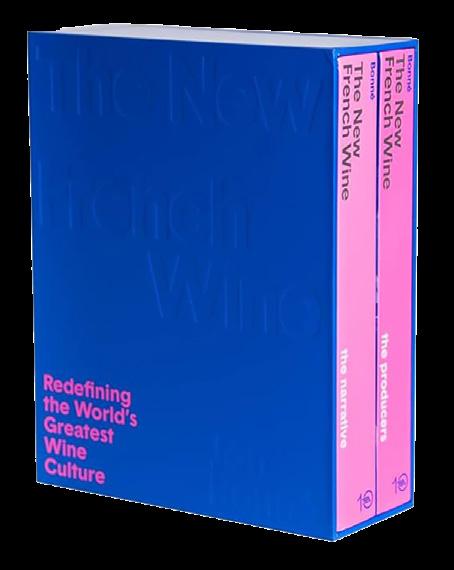
His text makes gestures towards local

There’s visual pleasure in Francesco Bongiorni’s attractive retro maps, and especially in Susannah Ireland’s marvellous photographs of rivers, vineyards, cellars, winemakers, grape-treaders and power-washers. But who decided not to provide captions for any of the scores of beautiful photos? Bad call.
Another omission, less important except to PhD-manqués like me, is a bibliography. That would have confirmed whether Bonné has read Andrew Jefford’s The New France, which came out in 2002, with a very similar mission. Bonné quotes Jefford as early as page 11, but the origins of the quote are not specified.
For both pleasure and information on France, Jefford’s book has been the one I’ve valued most over my time as a wine merchant. How does it compare to Bonné’s? For start it’s much more concise, just 256 pages. Surprisingly, Jefford manages to give thumbnails of more wineries: around 1,100 compared to Bonné’s 800-odd, in the second volume, dedicated to them. Bonné’s are much longer, amounting to mini-profiles, and

We do captions. This is St Emilion
are all the better for it. Though whether you will ever come across their wines is another matter: I stock 4% of those listed in my shop, and have tasted another 3%.
Where Andrew Jefford wins out is in his descriptions of land, people and above all wine. I’ve recently been enjoying Jus de Terre, a racy Jasnières from Domaine Gigou. How would each writer evoke this intriguing appellation? Bonné writes: “Jasnières, with its tuffeau and flint soils, offers a compelling expression of Chenin for the Loire, one different from Savennières or even Montlouis, more bracing and edgy.” Jefford goes for, “these are piano-wire wines out on the far edge of ripeness. Their apple and grapefruit
Jon Bonné went to France so thoroughly that I don’t have to, and visited hundreds of wineries


thom yorke confidenza XL RECORDINGS
Ciao a tutti. Having just got back from another jaunt to Abruzzo, July’s album of the month is Italiainfluenced. Getting to know the local vineyards is one of my pleasures, and this time I visited Nestore Bosco, which has been producing wines since 1897 and certified organic since 2018. I had a great tour of the historic vineyards, cellar and museum, where they not only have some rustic old winemaking equipment but vintages that date back to 1968, when the DOC was created. I was treated to a tasting of six wonderful wines including, unusually for the region, a Chardonnay. Two of these featured a painting of the Greek god Pan by Pietro Cascella.
flavours can have a shocking, jangling intensity: the juices seem drawn from a cold stone well rather than from wines on a sun-warm hillside”.
I know which sets my mouth watering, but which will I refer to most frequently in future? Probably Bonné, just because his views more accurately reflect the wine scene of the moment. He’s particularly good in his sympathetic but critical essays on the natural movement, pét-nats and the rise of Muscadet crus, for instance: subjects much closer to the mainstream now than when Jefford published his book.
One thing’s for sure. This “New” is not the final, definitive “New”, any more than Jefford’s was two decades ago. There’s a new “New” just around the corner. In France, Bonné concludes: “The past is never far away, and the future always close at hand.”
Duncan McLean is proprietor of Kirkness & Gorie, Kirkwall

As well as possessing great strength, Pan was a “lusty and able musician”, who loved loud music. Thom Yorke is certainly a consummate musician and has had some loud moments with Radiohead, The Smile and Unkle. His collaborations and solo works are generally more restrained; such is the case on his score for Confidenza, brought to the screen in 2024 by Daniele Luchetti, based on a 2019 book by Domenico Starnone. It’s performed by the London Contemporary Orchestra and features 12 pieces that move from gentle to menacing to scratchy, sometimes uncomfortable soundscapes that even include some jazz inflections, with Yorke’s unmistakable, hypnotic vocals, twisting through the music. The album has been available to stream, but July sees the LP release, on creamcoloured vinyl exclusive to indies.
Steve Tattam is owner of Winyl, a wine and record shop in Manningtree, Essex
‘When I took over, 85% of our customers were male.
Now 72% of them are female’
Lots of things have changed since Julie Mills bought Vinomondo in Conwy, north Wales, 15 years ago. She tells Graham Holter about how the business has evolved, how she stays motivated – and how she’ll be celebrating this milestone
Congratulations on 15 years of Vinomondo. When you started out, did you expect to get this far?
I was really naive when I first started. I had no idea of the sheer amount of work involved in this type of business. In my head I envisioned it going from strength to strength but the reality of how difficult the business is to run took hold about three years in.
What are the main pressure points?
Staffing is incredibly difficult, almost impossible, specifically in north Wales. To find anybody with any wine or spirit qualifications is pretty much impossible. So that’s the one and only thing really that’s held us back. Having said that, we’ve grown quite considerably, certainly over the last seven years. We’ve gone from having four staff to having nine on the team, made up of six full-timers and three part-timers and we employ students during the summer.
Tell us about the changes you’ve made to the business.
There’s been a massive increase in stock. Currently we have over 1,430 SKU codes in the shop. I did go through a stage of paring everything back and went down to just two suppliers but I realised we just didn’t have enough to offer.
We’ve now got eight [wine] suppliers and seven spirit suppliers. We decided that we
would order slightly less often from them, but still order enough to meet a really good price point for the shop.
There’s a lot more diversity in the wines. We have quite a few from Lebanon, Hungary, Romania, Greece, right across to the old-school ones: France, Italy, Germany. The price point has probably lifted because we decided that we would never compete with the supermarkets. People will come here because the service and knowledge is good, so they will spend more on their treats. That’s what we’ve focused on.
And you became a hybrid.
We knew that hybrid was the way forward because it’s very difficult to run just a retail business alone, when competition is so fierce.
Initially we opened the bar upstairs to dip our toe in the water as a hybrid. We opened the first garden and now we've opened an enormous second garden.
There’s seating outside for 80 people, and all this has hugely increased the
We knew that hybrid was the way forward. It’s very difficult to run just a retail business –competition is so fierce
turnover. The split between retail and drinking in is 50/50.
How many days a week are you there?
I’m here every day. I work fully in the business probably three days a week and the rest of the time I'm doing the accounts, wages, the planning of the events and so forth.
Do you stock local products?
We’re hugely Welsh-focused in terms of spirits and that’s because there are hundreds of Welsh producers. It would be foolish for us not to use them when the quality is so very high. The local Welsh people who come in expect local products and the tourists expect to see interesting local products.
We have stocked Gwinllan Conwy wines since their very beginning. We helped them plant their vines and at the very first harvest I said to him, “whatever happens, we’ll put it on the shelf – we’ll give it a go”. He’s won gold, silver and bronze awards internationally for his wine now.
Are your customers interested in particular wines because you are championing them, or are they getting that education and curiosity from elsewhere?
I think people are getting into them anyway. Younger people are starting to
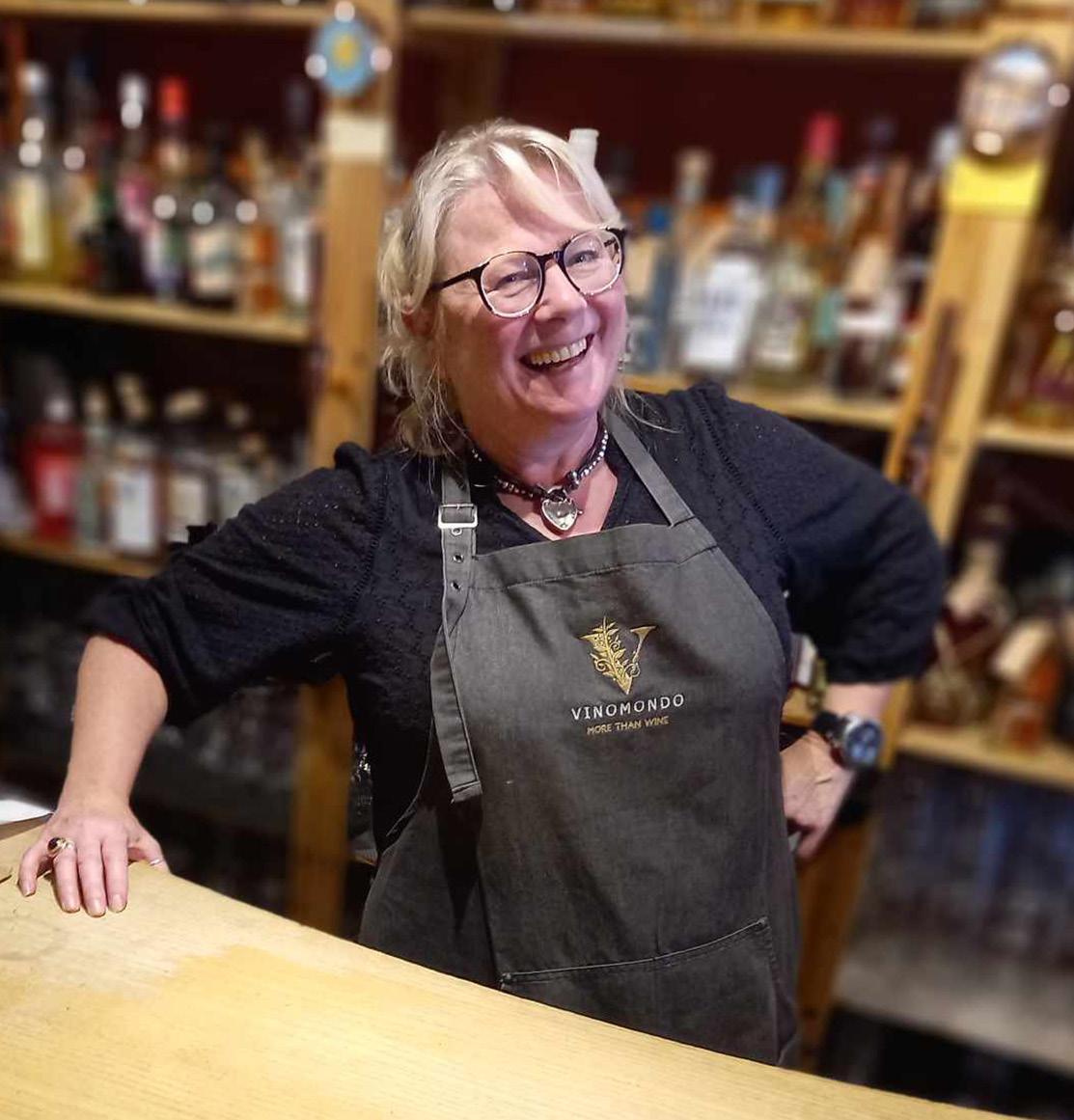





experiment with wine, which is fab. We wouldn’t have seen that 10 years ago but now younger people are like: you know what, this is really interesting, let’s get involved, let’s try different wines.
They’re looking at some of the natural wines. They’re not top of my list but there’s a big demand for them, so we stock quite a decent range. We never thought that we’d be able to cope with demand based on fashion, but because it’s just me, we can turn on a pin.
If we suddenly decide to have 20 orange wines, and so many natural wines, within two weeks we’ve got them. We don't have to worry about shifting an enormous amount of stock to clear space for them to come in or anything like that.
Fifteen years ago there were far fewer women running wine shops or even going to wine shops. Does it feel to you that there’s been a change in that respect?
I remember when I first started going to tasting events: in terms of people attending, it was probably about 80% male. I’ve seen a huge change in that and now I would say it’s probably a 60% men and 40% women attending tastings.
We do a customer survey every year and when I first took over the business our customer base was 85% male. The last survey results from four months ago show that the customer base is now 72% female.
What do you put that down to?
I think it’s simply because women are generally involved in buying luxury items, and maybe it’s because we’ve been an allfemale team for a long time. We do a lot of cocktails and things like that, so it’s quite a girly vibe. But by the same token we’ve got quite a few beers by the glass and 400 beers on the shelves, so I don’t know. I wish I could explain it. But there’s definitely a massive change.
Do you still find time to go to tastings or on the occasional trip?
I love doing tastings, it’s one of my favourite parts of the whole job, whether it’s going out to people’s houses or here in the gardens
We’ve got a big supper club as well, where we bring 20 to 30 people together every month to come and join us for supper. We invite one of the local businesses to come and do the food and we do all the wines. It’s about engaging our customers and they are really loyal.
What are you doing to celebrate your 15th anniversary?
We don’t really get offered wine trips very much. I don’t know if that’s because of where we are geographically.
We spend quite a lot of time at the beginning of the year going to tastings in Manchester, some down in London, and then again in September, we’re out and about at tastings and we taste as a team, so the whole team goes.
The whole thing costs us thousands of pounds, and I’m saddened that a huge number of tastings are in London and there’s nothing even in Birmingham or slightly further north. It’s like a black hole when it comes to wine tasting. It’s quite short-sighted, but I don’t think it’s going to change.
How often do you run events for your customers?
When we first started it was quarterly, but now we do a tasting or an educational event a week. That’s a lot of time for me and people always say, how the hell do you do it? But we have to do it because it brings in a really good income and it sells wines off the shelf, and introduces people to really more obscure stuff that we like, and enjoy having on our shelves.
We have relied on suppliers to do tastings, but I have realised that customers would rather I do them. They can ask a lot more questions and feel a lot more comfortable. I love doing them, it’s one of my favourite parts of the whole job, whether it’s going out to people’s houses to do private tastings or tastings here in the gardens. I love it.
I think it’s better to focus on the customers, so we’re arranging a number of things including a Champagne dinner in the garden which we’re offering at cost price to a base of loyal customers. We’ve got discounts to offer for all our customers, and a big garden party. It’s really to say thank you for coming for 15 years.
How do you keep your enthusiasm going?
It’s quite hard because of the physical nature of the job. I’m 57 now and I was quite ill for a couple of years; I’ve got quite a serious lung condition. But, the customers, improving my own knowledge base … I spend a huge amount of time learning about different regions. And bringing young people through and encouraging them to learn is what keeps me motivated. I love it.
And what’s next for the business?
I don’t think I want a second shop because replicating what we’ve got is only doable if I’m there, and my business is mainly me.
We’ll continue to grow this, and if we could find a bigger premises, that would be absolutely brilliant. I own the building and I’m just waiting for the opportunity to try and find a bigger premises.
It’s easy to look for a way out. To carry on building and looking for a way forward is the difficult route. But I think that’s what being a business person is all about. It’s about working at finding a way forward to bring your team along with you. I think the biggest investment always has to be your team. That’s number one and then everything else just falls into place.

Zuccardi-backed project uses Malbec and Torrontés, blended with botanicals from the Andes foothills
Designed, crafted and bottled in Mendoza, La Fuerza vermouth – new to the Hatch Mansfield portfolio – combines Argentina’s iconic Malbec and Torrontés with local botanicals grown in the Andes foothills.
Sebastián Zuccardi, winemaking director of Zuccardi Valle de Uco, one of Argentina’s most exciting wineries, has collaborated with Julián Díaz, Martín Auzmendi and Agustín Camps to create La Fuerza. The vermouths are made with Malbec and Torrontés sourced from the Zuccardi family’s Mendoza vineyards.
The soul of La Fuerza vermouth is the botanicals sourced from the lower reaches of the famous mountains. These include artemisia mendozana, carqueja, lemon verbena, creosote bush and thyme. The La Fuerza team collect the botanicals in a way that is not only environmentally sustainable but also respects local artisanal traditions.
La Fuerza Blanco is a dry vermouth with fresh citrus fruit flavours and a balanced finish, while La Fuerza Rojo is a red variant with notes of black and red fruits with a rich, spicy finish. Both vermouths contain more than 30 hand-picked botanicals
including sagebrush, jarilla, thyme, piperine, sage and orange skins.
La Fuerza is fast becoming a lifestyle brand in Argentina with the team now opening two bars, one in Buenos Aires and one in Mendoza, where guests can enjoy a wide range of cocktails made using these versatile vermouths.
La Fuerza Rojo is described as the perfect addition to a simple spritz, or any other cocktail calling for vermouth, like a Negroni or Americano. La Fuerza Blanco makes for a delicious apertif, light spritz, or a number of other classic cocktails that have a vermouth element.
Visit hatchmansfield.com for more details





Newly returned from the Scillies, instead of catching up on everything I’ve missed after a week off work I’m straight into writing this. Pro tip: I always set my out-of-office for a day or two longer than I’m actually away. This means I can deal with any customer queries and general admin before I get suppliers on the phone (I write this nervously hoping that none of them reads this column).
Pictures cannot describe just how beautiful the Scillies are, and how idyllic it all seems, at least to a tourist. I was, however, surprised to note that there is no wine shop and it’s a good job I’d thought about this before going and shipped a case of wine over for the week.
The day before I left, I’d had some pretty bad news about my collarbone. It isn’t healing, and there was some amazement that I’d been able to get out for a few short runs as it should be too painful (note: if
your broken collarbone isn’t very painful, it turns out it’s not healing). So, having insisted I was going to be starting the race regardless, I found myself packed off to the islands with the words “whatever you do, don’t fall over”.
This year, out of 136 starting runners in the Scilly 60, 81 made it back. An incredible 60% of runners achieved this massive feat, but you should be under no illusion that this was easily done (although the runner in second place, who ate 12 pains au chocolate and didn’t carry any water, looked like he was finding it pretty easy).
My race was over half-way round the third stage. I could have tried to finish this one, but the words “don’t fall over” were coming back to haunt me, having tripped probably a dozen times on the course already. “Course” is also a strong word for what amounted to a dash through bracken, narrow tracks just wide enough for a foot, and climbing over rocks.
I was hot, we’d started the stage by running uphill on sand for almost a mile (that particular mile can, in the immortal and oft repeated phrase of the week, “get fucked”) and I was exhausted.
So, my first ultra is a DNF (did not finish), assuming that we don’t count the time I went the wrong way on a marathon, adding another mile to my overall distance. Mentally, I was ready for this outcome, and it’s clear from watching the pain that my two (faster) friends went through that I would not have finished had I been fully trained either (out of the three of us, only one finished, the absolute legend that he is).
If you’re a non-runner, I’m sure you’ve read this and you’re thinking, why put yourself through it? I don’t have a sensible answer to that. But once my race was over, I retired to the pub with my newfound DNF friends.
We shared a few pints together cheering on our fellow runners as they headed towards each island’s finish line. There looked to be some jealousy, in the heat, that we were enjoying perfectly cold drinks while runners struggled on. Those ice-cold pints were the best I’ve ever had, better even than the post wine-tasting pint.
I could have tried to finish the third stage, but the words ‘don’t fall over’ were coming back to haunt me
So, what now? For the immediate, I must get my collarbone sorted. I can’t begin to explain how I feel about this; it would be so expletive ridden that The Wine Merchant would refuse to print it. Normal service will therefore resume, and I shall go back to bitching about shop life. However, one day I expect to go back to the Scillies and try to exorcise my demons on this course. After all, my certificate says “unfinished business”.
Cat Brandwood is the owner of Toscanaccio in Winchester
Al Wighton is explaining where the name Alteus Wines came from: the “Al” is from his name, the “te” from wife and business partner Teresa, and the “us” is the two of them together. “After I thought of the name, I spent about three days trawling the internet making sure it wasn’t the Greek god of fornication or hellfire,” he jokes.
The Wightons bought what was formerly the Cork & Keg off-licence, just adrift of the main high street in the market town of Crowborough, in the heart of the Sussex Weald, in 2019.
The site had been a wine shop of some description or other for more than 50 years, serving as an Unwins and a Thresher at various times.
“I know it was the Crowborough Wine Company at some point because when we moved in the meter was still registered under that name,” he notes.
“There were still loads of Thresher carrier bags in the cellar and when we took out one wall there was some racking with paper labels saying ‘Bulmers Cider 90p’.”
Teresa still works full-time outside of the Alteus business, so former accountant Al pretty much runs things single-handedly day-to-day.
“I’m a commercial animal from way back, so I run a tight cost base,” he says. “Teresa helps me out on weekends and does all the social media stuff because I don’t understand it at all. I come from the accountant’s school of marketing, which is ‘how much does it cost?’.”
Al wighton knew it was time to leave the world of accountancy and try his hand at a career he thought he would enjoy more.
five years on, his alteus wine business in crowborough, east sussex, has given him the rewards he was hoping for – and they are more emotional than financial
by nigel huddleston
He decided to upscale a passion for wine and become an independent retailer after becoming fatigued from three decades in the corporate world.
“I just got bored with sitting around having the same conversations year in, year out, with the same people, the same outcomes, nothing ever changing,” he says.
“I sat there in one board meeting and realised I was the one out of step, not them. They were all perfectly happy having the same conversations. I just decided I’d had enough.”
What was it about wine that appealed as an alternative career?
I love the complexity of wine, the infinite possibilities. Every single bottle is different: different vintages, different locations, different times of day you drink, different meals you have it
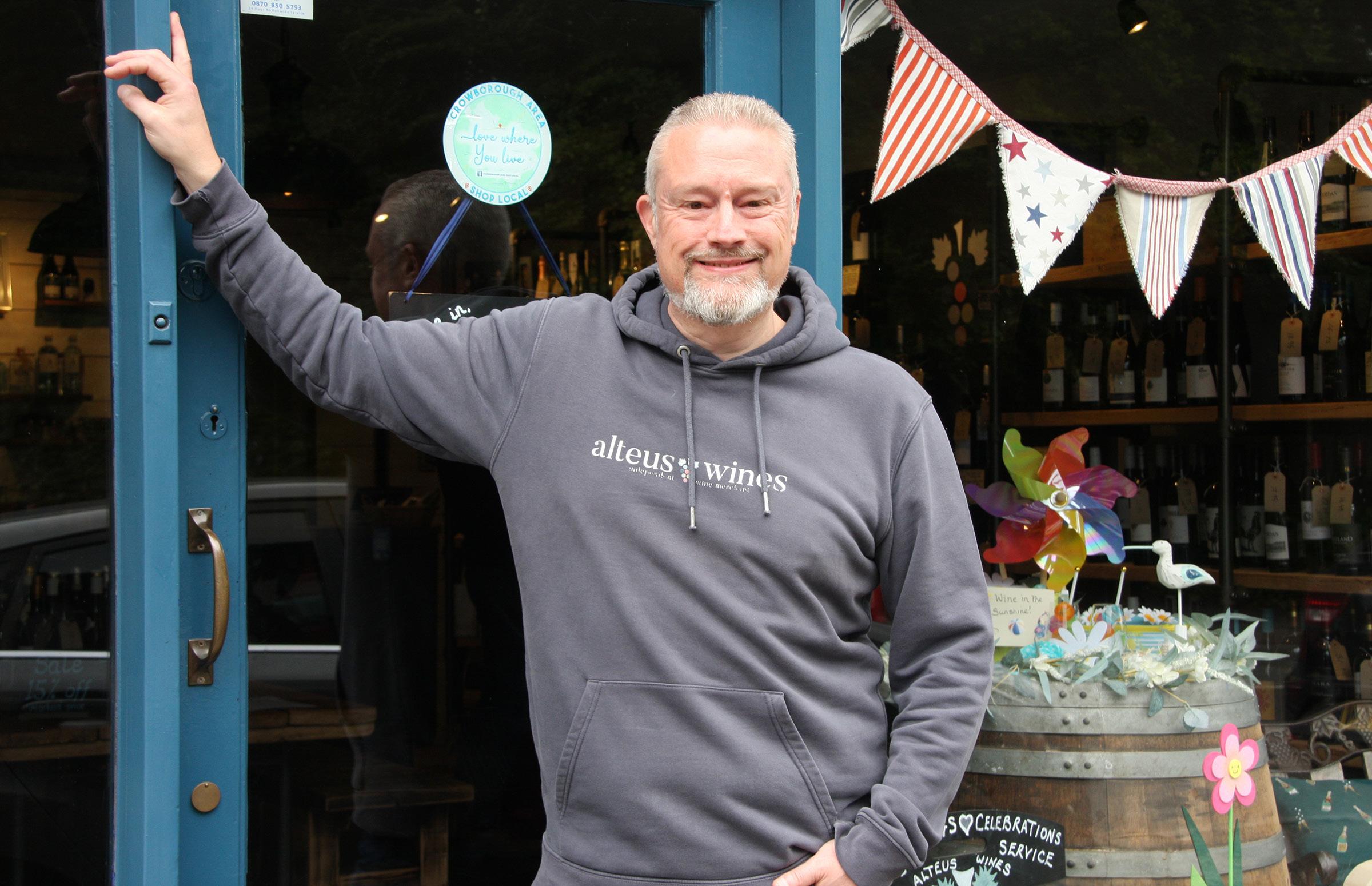
with, different temperatures you drink it at. I can have two bottles out of the same case two weeks apart and get something different each time.
Why did you decide to buy an existing business?
The location is interesting. Parking outside is a massive benefit. If we were in the town centre people would have to use a car park. Most people come in to buy a case of six or 12, and don’t want to lug it five minutes back to the car.
There’s not really a great deal in the way of retail in the town centre either, sadly. Consequently, not that many people come into Crowborough to wander round and browse so there’s not a great deal of passing trade potential there for us. We’re a destination: people will drive here just to come to us. At first that’s a slower burn, while people get to know who you are and what you do.
What changes did you make straight away?
We always had in mind that we didn’t want to be an off-licence. I don’t mean that in a snobby way; it’s
“ We were happy to take some of the old customers along on the journey, but we
have changed what this place is about”
just a different model. I don’t want to be here at 10 o’clock at night serving cigarettes and crisps and £8 bottles of Sauvignon Blanc and four-packs of cider.
But we didn’t want to throw the baby out with the bath water either, because we were starting from zero. We were happy to take some of the old customers along on the journey, but we have changed what this place is about.
Did you make compromises on the range at first?
We started looking at what already sold well, which was actually tricky because it had an old-fashioned till that just rang up the numbers without capturing any data. I retained lines that I knew were popular and fitted our model. As we stand here five years later, maybe 10-20 of those lines are still left. We’ve got about 350-400 and we roll things in and out all the time.
I want to stock as broad a range as I can. I’d rather stock breadth than massive depth and I like to keep my supply chains short, so I can offer as much choice to people as possible without having to
hold 20 cases of every single wine on the shelf.
Can you expand on what you mean by keeping the supply chains short?
I like to work with suppliers where I can access wines very quickly and who are reliable. I’m not storing 18 cases of every single wine. I’d be tying up hundreds of thousands of pounds and I’m a small business. I’m also an accountant, so working capital is very important to me. Managing the balance sheet is something I do day in, day out. I want to have three cases in stock but know I can get more in a couple of days if I need it.
Does that mean you’re driven towards a particular type or size of supplier?
I use Boutinot and Hallgarten, who both have minimum orders, but I’m smart about how I roll those wines through. Beyond that most of my suppliers have fairly low minimum orders now and are quite easy to access. If they don’t and they’re not, I simply don’t use them. I’ve been there and done that in businesses where I’ve worked in the past, but I choose who I do business with now. I work with good, reliable people and I’m not going to deal with fools. And there are fools out there.
Has your approach changed since the early days?
I’ve started to use some smaller specialist importers over the past couple of years, such as Buckingham Schenk for Italian stuff. It’s been great for us. I’m finding much more flexibility with some of the smaller suppliers since Covid. Previously, they would usually want you take a significant volume, but the reality is I might only want four or five wines from them. I don’t need 20 cases of each. I want a couple to see how they roll. Since Covid there’s no doubt that minimum orders have come down.
Some are overstretching themselves. We had one smaller importer we picked up and took five or six lines from. I’ve done three orders now and each time three lines have been out of stock. It doesn’t matter how much I like the wines, if I can’t get them on the shelf, what’s the point?
I’m tolerant up to a point, especially if they’re nice people. I’m less tolerant if they’re big organisations that just can’t get their act together.
What price level are you doing most volume at?
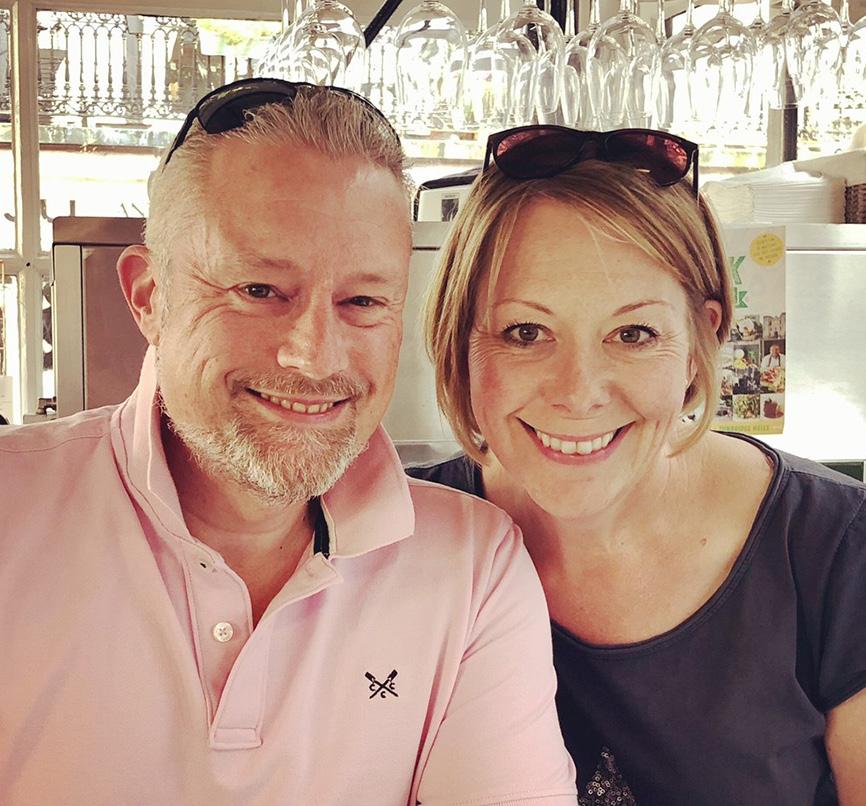
Al
with wife Teresa, who works in the shop at weekends and looks after social media
“I’m finding much more flexibility with some of the smaller suppliers since Covid”
Around £12-£16 is the price range people really respond to well. When we took this on, the average price was probably around a tenner. Those prices have become harder and harder to hit in the last couple of years.
There was a rep who popped in the other day, who we don’t work with yet, who used the term “volume builders”. I think that’s quite smart. There are too many importers who’ve got lovely wines at £20-£25 retail, but in independents, as we know through The Wine Merchant survey, the average price is about 15 quid. There’s no point in trying to sell me loads of stuff at the £25 mark. You need volume builders, those great-value wines at £12£15, otherwise you become niche. It’s very easy for me to find a great £40 bottle of wine but that doesn’t make me useful.
Having said that, trying to find anything you can hang your hat on under a tenner is getting tougher and tougher, but it matters less to me now than it used to, in terms of the customer demographic.
You have a wall of wines for summer, with food pairings and the like. That changes seasonally, presumably?
Actually, it normally has new wines. This is the first time we’ve done something a little bit different and put some recommendations up. As a feature, it draws people straight away. The regulars are always
interested in what new stuff we have, so normally it’s the first place they go to.
It’s always surprising that more wine shops don’t do a “new” section, like book shops or record shops.
I had no background in this industry, so I didn’t really know what most other people did, other than from my previous experience as a punter. Whenever I’m away I’ll always look into the local independent because it’s fascinating to see what other people do – and they’re all different.
Tell us about your tastings.
We do them in the shop. It’s an intimate setting and people can buy at the same time. We do 23 people, which is not massive. The last one I posted online sold out in half an hour, but sometimes the fact that people can’t get into our tastings means there’s more demand next time. For most of our events we could probably sell about 50 tickets, but I don’t want to take them off site.
Why not?
You then have to hire a hall, and you have to take the wine out there, but most importantly with the way we do them now, people are in the shop where the wines are. The tickets are reasonably priced because I want people through the door. I want them to spend the extra £10 I could put on the ticket price on another bottle of wine, go home, enjoy it and come back and buy more.
We do free spring and Christmas tastings. I
“I had no background in this industry, so I didn’t really know what most other people did”
want as many people as possible through the door enjoying wine and coming back again, rather than charging a tenner which might put half of them off coming. I do a preview event on a Friday evening for my wine club members, big spenders and good customers. They tend to know each other as well, so it’s a social thing. Then the Saturday is open house: you can’t get in the door.
On one hand it’s hard to manage, but on the other it creates excitement and interest. If you were walking down the road and you’d never seen Alteus Wines before, you’d think “my god, I wonder what’s going on in there”, and you’d go and have a look.
The wine club seems to go a bit further than just “we’ll put a case together for you”.
The most important thing is every case is bespoke. We start with what people like, what the big nonos are, what sort of splits they want, and it just gradually evolves from there. They get a case every two months, but if they want it earlier they can get it. We contact them a week before it’s due and see what balance of wines they want. It doesn’t always have to be the same. It might be in the winter they want 12 reds, or in the summer a few rosés. Or they might want to spend a bit more for Christmas, or a bit less at other times. It’s very flexible. We get to know people, that’s the most important thing.

years
If you get a case from Laithwaites or Naked, there are three wines you think are great, three where you think “I don’t like Sauvignon Blanc”, and a few average ones they just want to get rid of, so you might enjoy half of them. The aim with us is that you enjoy every bottle in the box. They also get some tasting tickets and discounts through the year.
Beer has a prominent place.
We’re a wine merchant but I want other strings to my bow. We focus on local stuff. Harvey’s is like mother’s milk round here. They’ve been around for well over 200 years and they’re great to deal with. It’s much more predictable business for me. Regular Harvey’s customers will bring their empties back and always take another case.
The Sussex Best is probably around 60%-70% of the sales but we do the full range. Bonfire Boy is a seasonal beer that comes out in the autumn but people want to drink it all year round. The shelf life is two years, so I stock up on it and there’s no risk. It ties up a bit of capital but that’s fine because I know it will turn over.
Craft beer drinkers are very different because they always want something new and only buy one or two cans at a time. If they find they like it they’ll go and buy a case online directly, so I never sell cases of it. It’s nice to have, but it’s never going to change my world.
You have a spirits range with a local focus too?
I think you can either stay with local stuff or become a real specialist. Commercially, it costs a lot to hold the stock and I make less margin on that than I do on anything else. I don’t have any ambition to be a specialist spirits retailer. I’ve been involved in strategy in big companies and my philosophy around that is to focus on your core business and be really good at that. Don’t be a magpie and grab shiny things left, right and centre. That’s why Harvey’s have been around for getting on for 250 years.
And you only deliver locally?
During lockdown, of course, the whole delivery thing went crazy, but we kept it to a very small radius. We were doing it all ourselves and
“During
lockdown, the whole delivery thing went crazy. Since then I’ve found people prefer to come in and have a chat”
delivering 95% the same day and the rest by the next day. Since then, I’ve found people prefer to come in and look around and have a chat. But we still do local deliveries.
Why haven’t you expanded it further?
I’ve looked at national delivery, but a lot of the wines we have you don’t see elsewhere around here, so I’ve pretty much got a captive audience. If I went online, I’d be competing with someone in Hartlepool and the only way to do that would be on price. We’d need to advertise pretty heavily, and that’s expensive. And then we’d have the worry around packing, couriers and breakages. I’d be looking at low gross margins, high marketing costs, dealing with couriers and complaints, and finding someone to do it. My instinct is telling me I’d make some money out of it, however … it’s not a hard “no” but I’m yet to be convinced it’s going to change my world for the good.
Five years on, what’s the best thing about being a wine merchant?
Wine! I’m very lucky to have access to a lot of lovely

wines. It’s also a really nice industry. I come from quite a hard-nosed commercial background, in sectors like health and insurance. So many people who work in wine do so because they love wine, but I don’t think anyone who works in insurance does so because they love insurance. Almost everyone who comes through the door is in a good mood and has chosen to be here. They’re not here because they have to be. Every interaction gives positive energy and that’s a really nice thing. But the best thing is I get to do what the hell I want. I don’t have to work on corporate structure or get approval from boards or risk committees. I have complete autonomy in what I do.
And the worst?
I don’t earn anywhere near as much money as I used to, but that’s my choice. There’s nothing bad about it really. The worst thing is the [pre-election] government, which deals with the wine industry in a pretty poor way considering how much it contributes to the economy. The policies around duty are outrageous and foolhardy and downright incompetent – the biggest rise in duty in history
“The best thing is I get to do what the hell I want. I don’t have to work on corporate structure or get approval from boards”
and no one gains. The producer’s not gaining, the importer’s not gaining, the retailer’s not gaining, the punter’s not gaining, and the government’s not gaining because the tax receipts have gone done. Which makes them idiots. That sort of thing makes me angry.
Have you considered a second location?
Could I replicate this? Probably not, because I wouldn’t be in there. I’d be relying on someone else to replicate it. You see it with franchises, like Jamie Oliver and the like. Fantastic chefs, great celebrities, opening a brilliant restaurant and then franchising it out and the whole thing falls over in five years –because it’s not them, is it? It doesn’t work. And we’d never open another shop with Teresa running it because we’d never see each other. We’re in our fifties now; this is a second career for me. I didn’t open this to work 70-, 80-hour weeks like I used to. I want to enjoy what I do and work reasonable hours. Does that prevent me making more money? Yes, probably. Does it mean I’m happy and have more balance in my life? Yes. I’m not 25. I don’t want 20 shops … but that’s OK.

Ilike Journey’s End winemaker Mike Dawson from the get-go. Not-so-fresh off a flight into London from Cape Town, he is cheerfully propped up with half a dozen coffees and looking genuinely eager and pleased to be in grey Blighty. His week-long visit offers a chance to promote his latest project: Ad Infinitum 2022.
Dawson has been with Journey’s End, based in Helderberg, since 2015. He talks a lot about stars aligning in his route to one of the best winemaking jobs in South Africa, but it’s a modest deflection from his evident passion and talent.
Originally from Durban, Dawson comes from a family and part of South Africa that doesn’t drink that much wine. Science was always his thing, and when the time came to find a university course that matched his interests, he landed on the oenology course at the University of Stellenbosch. Eighteen months after he started, Dawson switched to the agricultural arm of the university, Elsenburg Agricultural Training Institute, for a more focused and hands-on course, finishing top of the class in cellar technology.
The prize was a wine trip to Argentina and Chile, where he met Journey’s End general manager Leon Esterhuizen. The two hit it off, with Esterhuizen so impressed that he offered Dawson the winemaker job at Journey’s End.
The Journey’s End glove seems to fit Dawson very well. He’s as keen to talk about the estate’s strong sustainability and community ethos as he is describing the
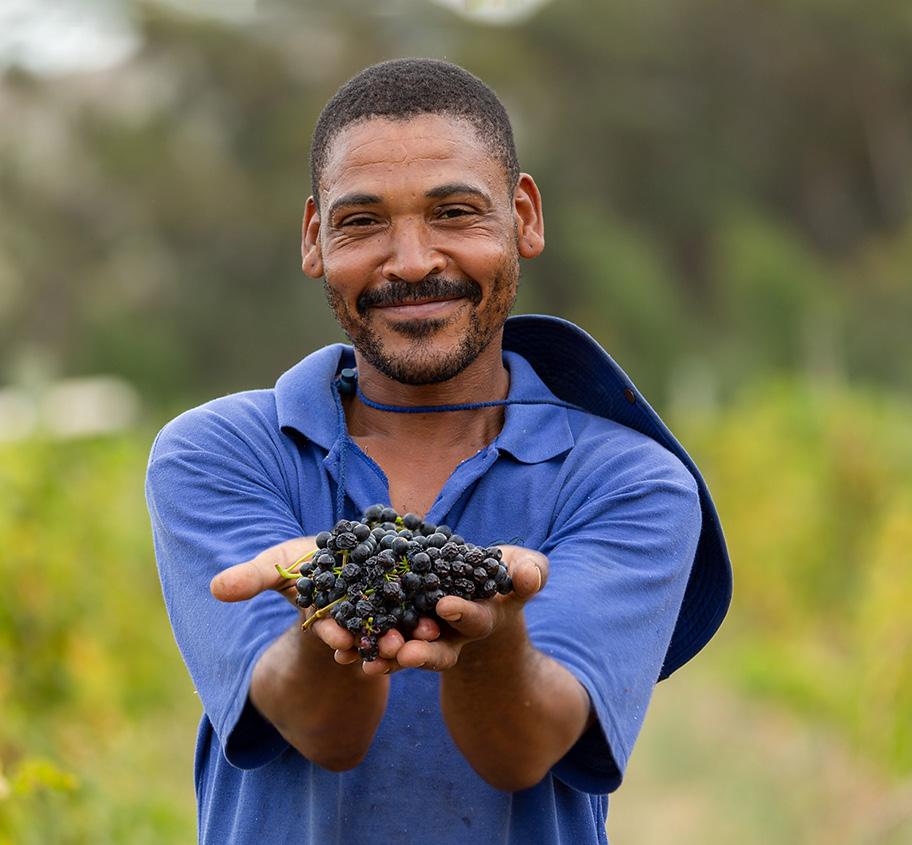

Sarah McCleery grabs half an hour of the Journey’s End winemaker’s time at to talk about sustainability, community and a new addition to the range. Wines
vineyards and his work in the cellar.
He gives a caffeine-fuelled verbal tour of Journey’s End’s community uplift programmes that include “beat the bully” campaigns and financial support to build a school and town hall.
Journey’s End Foundation was established in 2020, to tackle hunger and poverty through a network of soup kitchens. The aim was to provide 10,000 meals per week. To date, the foundation has provided more than 5 million meals to the local community.
The immense success can largely be
attributed to the Gabb family (originally from Shropshire) whose commitment to their adopted country, its people and wines, seems infinite.
Sustainability is a key focus on the estate itself, and solar panels provide all the energy it needs.
Dawson positively beams with pride that his new assistant winemaker, Kaylin Willscott, originally comes from the local village. A graduate of the Cape Winemakers Guild Protégé programme, she is already starting to make her own wines. In time

at the London Wine Fair Wines are imported by Bibendum
these could well be launched with labels inspired by the work of a local mural artist. Back to Dawson. His packed schedule leads to a frustratingly short discussion about the fact that he refers to himself as a “very compartmentalised” winemaker. He talks about the various techniques and vessels he uses in the cellar, with up to four or five different combinations per vineyard. Journey’s End V1 Chardonnay 2023 makes the point. It is 100% Chardonnay, 10% of the fruit fermented in 300-litre new French oak barrels and 70% goes into second and third-fill barrels. The remaining
20% of the fruit is put into a selection of terracotta, concrete and ovular-shaped vessels.
This “playground of winemaking” provides a useful working environment, allowing Dawson and his team to boost their expertise – which in turn presents them with more options for the production of premium wines.

The result is impressively delicious. Tangy, saline citrus and green tropical fruit light up this wine, and it’s hard not to be charmed by its plump, light baking spice and clarified butter finish.
Destination Chardonnay 2023 gives the winemaking team less playground time and it is, in Dawson’s words, the easiest wine to make. The rows of vines from which the fruit comes are picked one side at a time, two weeks apart. The side that gets the morning sun yields more mineral, saline fruit, while the afternoon sun side gives grapes with stone fruit and peach characteristics. The wine was aged for 12 months in 30% new oak.

It’s elegant, with generous orchard fruits and preserved lemon. A lovely hint of smoke gives the wine a nice detail at the finish.
The Chardonnay pair are the warm-up act. Ad Infinitum 2022 is the maiden vintage of Journey’s End’s Sauvignon Blanc (87%)/Sémillon (13%) blend. Fruit comes
from a vineyard 250m above sea level, four miles from the ocean. Located in the most south easterly point of Stellenbosch, the vineyards are planted on decomposed granite soils.
The grapes were co-fermented in 2,000-litre ovum vessels, which Dawson describes as being “round at the bottom, egg-shaped at the top”. He likes them because of the way yeasts can naturally circulate, staying in suspension for a longer period. There is judicious lees stirring, and then the wine stays in the ovum for nine months. A dry ice blanket above the juice prevents oxidation and retains the wine’s delicate aromas.
The wine’s aroma is strikingly lovely: Granny Smith apple, kiwi, pineapple, gooseberry, lime and lemongrass. The palate has a gorgeous saline edge, and the fruit has impressive intensity and vibrancy. I ask Dawson if he thinks the wine has ageing potential, and his hope and belief is that it does. Given this is a new wine in the portfolio and a first for the winemaking team, it’s a deeply impressive showing. A mere 2,650 bottles were made, and I feel very fortunate to have had the chance to sample one.

Dawson is such an interesting winemaker, and I could have chatted with him for a good deal longer. He – like his wines – has so much energy, character and sense of fun. It had been an absolute pleasure of a tasting.
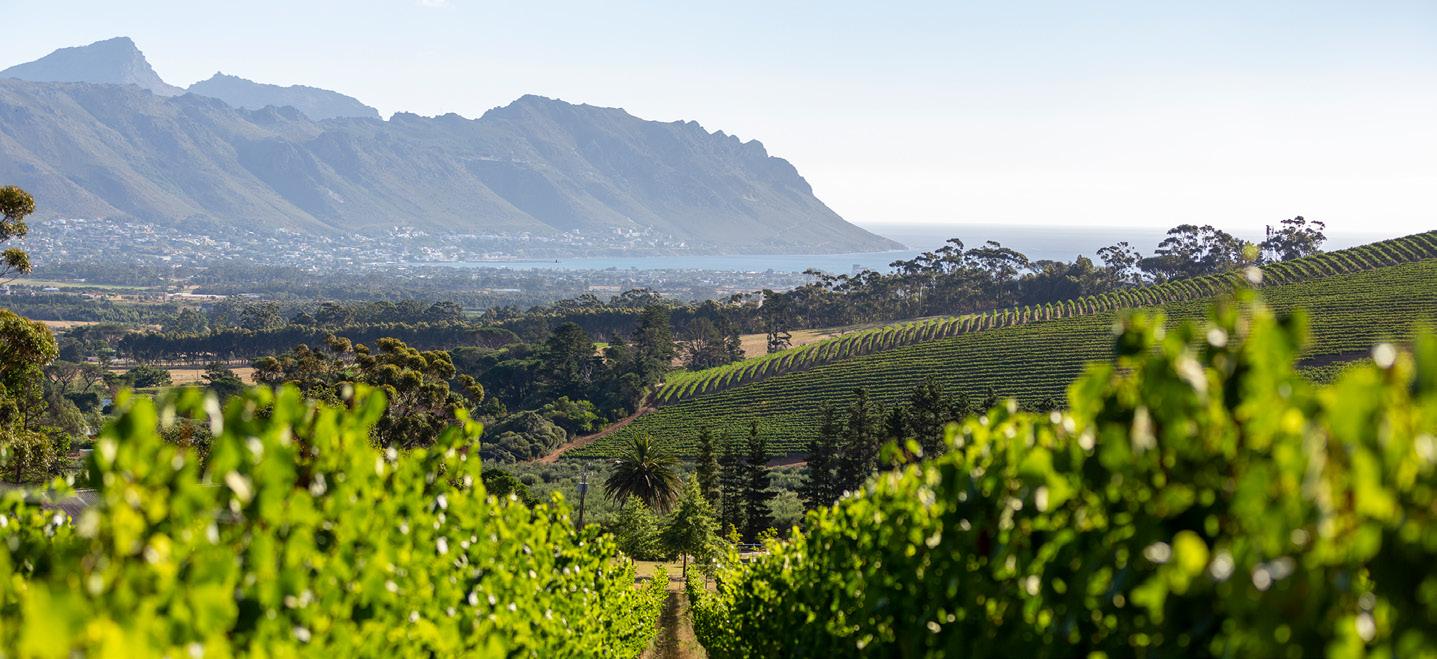

David Williams considers the results of the latest recreation of the Judgement of Paris and asks the question: are the top winemakers in the world really so different in their approach?
During the London Wine Fair in May, the organisers Brintex hosted an event that explicitly harked back to one of the defining moments in the past half-century of wine.
The Judgement of London 2024 was not exactly intended as a rerun of the Judgement of Paris, the 1976 blind tasting arranged by the late wine writer, merchant and entrepreneur Steven Spurrier, in which the top wines of California outperformed a selection of France’s grandest names. But the dynamic was similar: some outstanding European wines were pitted against equivalents from California and various other parts of the “rest of the world” in a
Leading new world wineries have had a damascene conversion to the idea that the best wines really do have a sense of place
blind tasting comprising a distinguished panel of merchants, wine writers and sommeliers.
The results were intriguing enough. Taken as a whole, Europe just about came out on top, but it was mighty close: in total Europe’s representatives earned 2,621.5 points from the judges to the Rest of the World’s 2,604.5 points. And while the two top-scoring reds at the event were both French (the winner was 2012 Chave Hermitage, which just pipped 2009 Mouton Rothschild), the two top whites were antipodean (New Zealand’s 2011 Pegasus Bay Riesling Bel Canto coming out just ahead of the Clare Valley’s 2012 Grosset Polish Hill Riesling).
That the best wines of Europe and the Rest of the World should be so closely matched won’t come as a surprise to most attentive and unprejudiced wine drinkers. As one of the Judgement of London’s organisers, the Court of Master Sommeliers CEO Ronan Sayburn, told the judges before the event, the boundary between old and new world wine is now “blurred”. He
added: “We, certainly in the MS community, are dropping this distinction.”
So, too, are most merchants, in my experience. And with good reason: the terms have long outlived their explanatory usefulness. These days you are every bit as likely to find a wine that is new world in the old stereotypical understanding of the term (big-fruited, super ripe, maybe even a little sickly) in Spain, Bordeaux or Bolgheri as you are in Napa or Barossa; equally, you are just as likely to come across “old world”-style wines (supposedly refined, terroir-driven, mineral) in the Yarra Valley, Santa Barbara or Chile’s Secano Interior as you are in Burgundy, Piedmont or the Mosel.
But, while it may now be rather dated, and while it may at times have been overstated, the cultural divide between the old and new world was no invention. Certainly, at least until the late 2000s, there was a sense of two very distinct philosophies and cultures at play.
On the one hand, the new world

approach, driven by science, the power of the winemaker and the freedom to experiment; on the other, the classic old world model built on tradition, restrictive rules and a faith in terroir – or, as the more militant exponents of each side of the divide would have it: the industrial production of fruit-bombs v the anachronistic creation of brett-bombs.
In the years since then, what’s emerged has been a kind of synthesis or détente, with each side taking on ideas from the other. Old world winemaking has been greatly enhanced by new world understandings of cleanliness and ripeness, and by the greater creative space afforded to wine producers operating outside of overly prescriptive appellation rules in categories such as IGP Pays d’Oc, Vino da Tavola or Vin de France.
But perhaps the most significant switch in the past decade has been in the new world, where leading wineries have had a damascene conversion to the idea that the best wines really do have a sense of place,
and that techniques in the winery cannot overcome the faults of the vineyard.
As the influential Australian winemaker, Brian Croser, who founded and sold Petaluma in the Adelaide Hills before starting the Tapanapa project in three prime sites in South Australia in 2004, told me in a recent interview: “Twenty years ago we [in Australia] were still a fairly agri industry with a lot of technology oriented to the inland vineyards.”
Croser reckons that things began to change during the 2000s, when “the discussion was going on about whether terroir is an affectation or a real thing –whether fine wine is a reflection of where it is grown.”
According to Croser, the terroiriste’s argument eventually held sway, and, since then, Australian winemakers have steadily come to agree that “not all sites are created equal […] The idea of the distinguished site has been accepted. Everyone in the fine wine industry is working towards making sure that the site is right and refining what they do to get the best result.”
Much the same thing has happened, if not on precisely the same timeline, in Argentina, Chile, California, New Zealand and South Africa, and intriguingly, many of these places are now looking to refine their systems of geographical origin to protect and celebrate ever-smaller regions. Somewhat paradoxically, it seems, the proof that the distinction between new and old world no longer matters can be found in wines where place has never mattered more.
Answers to questions on page 14
1 Tempranillo
2. The Yeatman
3. Spätlese
4. (c) Barbera
5. The Crouch Valley
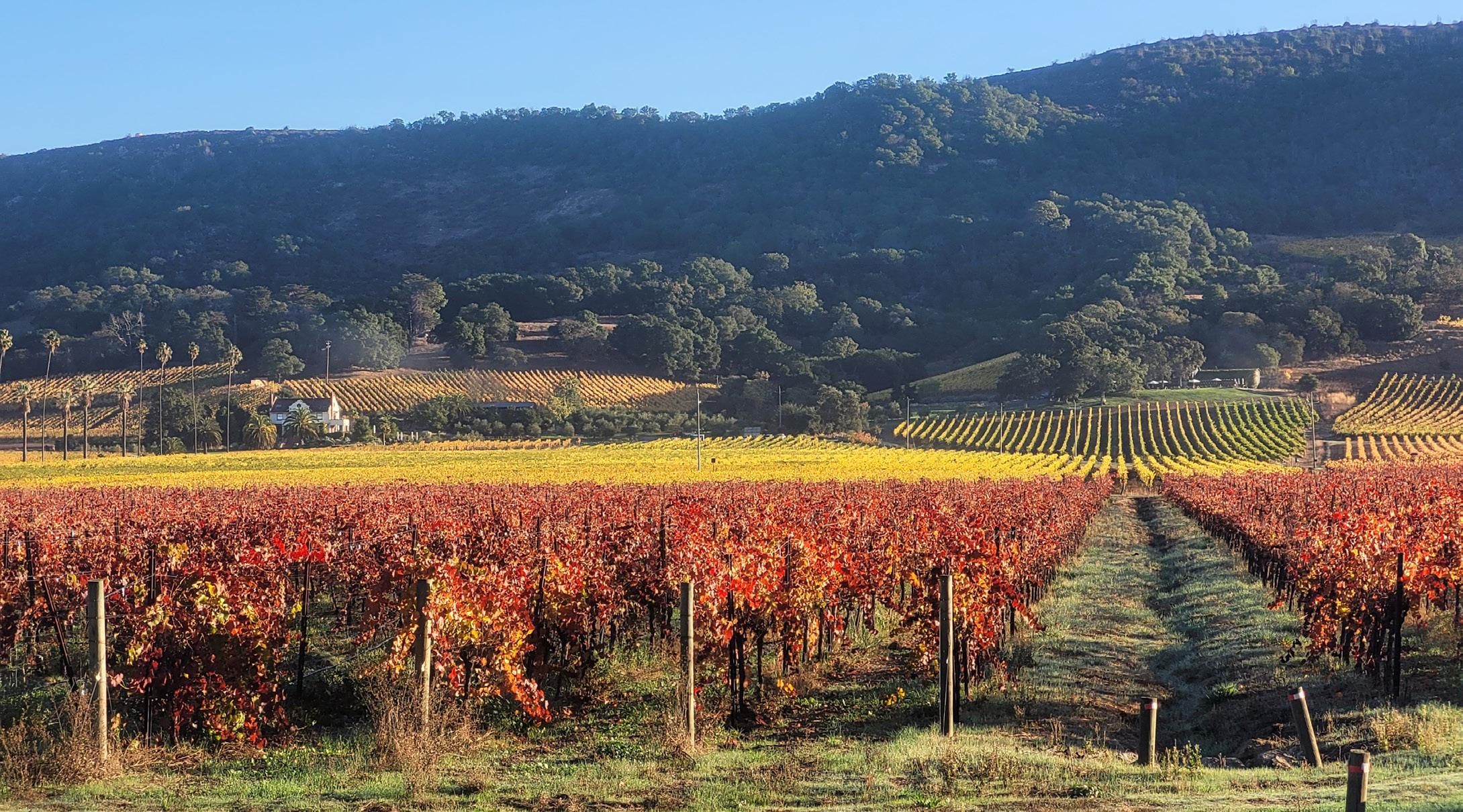
Lanchester Wines is delighted to welcome Don Sebastiani & Sons to its portfolio. Indies who’ve tasted the range have been impressed by the price, as well as the quality, of the wines
It is hard to escape the conclusion that Lanchester Wines has scooped itself a goodie with its new wine partner, Californian producer Don Sebastiani & Sons.
The match was made at ProWein, where the Lanchester Wines team quickly understood that Sebastiani had “a remarkable ability to supply high quality wines at competitive price points, making them an ideal partner for us”.
The business was established by Samuel Sebastiani at the turn of the 20th century, and the first of the family’s wines were sold in bulk. By the 1930s it was known for its innovative winemaking, a reputation that allowed second-generation August and Sylvia to begin selling their wines to the general public in the 1940s. Their youngest son, Don, took over in 1986 and oversaw a
threefold increase in production, focusing on varietal wines. In 2001, Don Sebastiani & Sons was established and today Donny Sebastiani is at the helm.
Grapes are harvested from across the golden state.
Mark Roberts of Lanchester Wines says: “Both ranges will be launching in the UK in early July. The initial feedback has been overwhelmingly positive: the wines have been described as ‘excellent’ and ‘stunning’. The Don Sebastiani team have been exceptionally supportive, going above and beyond to assist us.” It seems set to be a positive collaboration for all concerned.
Don Sebastiani & Sons is a family-owned winery with a keen eye on quality and a savvy understanding of the UK market. As director Max Franks says: “We could see
there was an opportunity in the £10 to £15 range and The Path and Leese-Fitch wines slot in perfectly.”
Indies who came along to a presentation of the wines at the London Wine Fair agreed there are huge advantages in having Californian wines on the shelf at this price point.
As many consumers associate the region with expensive, premium wines, the Don Sebastiani brands can introduce what California has to offer to a much wider audience.
The Path includes a selection of dayto-day drinking wines, with readily identifiable varietal qualities. Leese-Fitch wines represent a discernible step up in quality, but still at a very affordable price on the shelves of independents.

“This dances across the mouth,” enthuses James Wormleighton of Waistcoat Wines in Loughborough. It’s a varietally-true Chardonnay with floral notes adding lift to the generous orchard fruit and lemon character. A 4% Viognier component adds perceptible weight.
£13-£14
Aged for eight months in French oak, 25% of which was new. 80% malolactic brings impressive texture to this wine, which was uniformly praised for the value it offers. Creamy apricot fruit, with preserved lemon and roasted hazelnuts. A nice underscore of acidity makes this a very moreish Chardonnay.
RRP £16-£17

“The Chardonnays were incredibly clean and unique … and I loved the use of Viognier which, cleverly introduced in minuscule proportions, really did well to add mouth feel and volume in a wonderful way to a clean, mineral and quite racy Chardonnay.”
Sunny Hodge, Diogenes the Dog, south London


An easy-drinking, silkysmooth Pinot with summer berry and cherry notes. There’s an attractive splash of spice on the finish too. Don Sebastiani has a knack of bringing that bit extra to the wines with subtle blending; there’s 5% Petite Sirah, 4% Merlot and 3% Barbera in this wine. RRP £13-£14
The same blend as The Path but with 10 months of ageing in oak, 30% of it new. The winemaking team uses primarily French oak, but also Hungarian and American, for added complexity. A discernible step-up from The Path, it represents cracking value for money. RRP £16-£17


78% Cabernet Sauvignon, this wine is, intriguingly, topped up with Petite Sirah, Teroldego, and Merlot, among others. The result is a full-bodied, plump Californian red which oozes ripe fruit, capturing the abundant sunshine of the golden state. RRP £13-£14
“I tasted the ranges at the London Wine Fair and was very happy to find the wines hit a quality and price point that’s tough to find in the UK. This has been a traditionally difficult spot to fill on the wine list because the UK is good at premium and bulk Californian. These two ranges have varietal typicality that reflects the region they come from perfectly.”
Edward Clarke, Davis Bell McCraith Wines, Bristol

A big wine that got a big thumbs up. The grapes come mostly from the sunny Lodi region, as well as cooler Clarksburg, whose fruit brings structure and more briar fruit. The wine strikes a brilliant balance between richness and freshness and is hugely approachable. Abundant raisin, prune, baking spice and dark chocolate fruit which lingers long and generously. Benchmark Zinfandel. RRP £16-£17

“The wine that stood out was the old-vine Zinfandel: beautiful fruit notes that are well integrated with the oak and a lovely complex finish. An absolutely stunning showing of a Cali wine.”
Sunny Hodge, Diogenes the Dog, south London
Find out more about the full range of Don Sebastiani & Sons wines available from Lanchester Wines by visiting lanchesterwines.co.uk or call 01207 52 1234
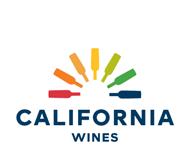
Everyone thinks they know Vinho Verde – a light, zesty, easygoing and gently sparkling white wine from northern Portugal. But really this is becoming an outdated caricature.
As Sarah Ahmed says: “Vinho Verde has so much more to offer than the classic summer quaffers … it’s a hugely diverse offer across a range of styles, different grapes, different terroirs”.
Sarah, an expert in Portuguese wine known to many as The Wine Detective, is fascinated by what she’s been encountering in Vinho Verde. “It continues to push the boundaries of quality and complexity, whilst remaining true to its roots,” she says.
“Vinho Verde is without doubt a region that, especially in the past five to 10 years, has just got more and more exciting, more and more relevant. And I think we’re going to see so much more from it.”
Introducing a London masterclass attended by merchants and importers, at which she presented a dozen wines, Sarah set the scene by reminding guests that Vinho Verde is spread across 17,000 hectares, divided into nine distinct subregions.
“There are also lots and lots of growers,” she said, “and there are over 100 permitted grape varieties.” White makes up almost 90% of production, with

Why is Sarah Ahmed so excited about this rainy corner of northern Portugal? All became clear at her recent London masterclass, where she set out to change perceptions about a familiar region where innovation is everywhere
“We’re going to see much more coming out of Vinho Verde, including single-parcel wine, very much a new trend”
rosé accounting for just over 9%, reds for 3% and sparkling for just 0.3%.
Vinho Verde has a “long stretch of chilly Atlantic coastline to the west”, Sarah said.
“The region in broad terms has a temperate maritime climate which is absolutely key to its signature freshness.
“There’s a huge network of rivers, and they are corridors for Atlantic influence. You get cooling Atlantic breezes funnelling into the vineyard region; you get humidity.
“What’s really important for the vineyard region is you’ve got high rainfall, but you’ve also got welldrained granitic soils. And when I say granitic soils, usually they’re very decomposed, quite sandy. So the water just drains through really easily.
“In the west, where there is pronounced Atlantic influence, those cool breezes that bring higher humidity and rainfall produce aromatic, fresher, generally lighter wines.
“It gets warmer and drier and hillier as you go inland. Hills means slopes, which means sunny

aspects, which means poor soils. In the easternmost areas, there’s a degree of continental influence as well. So daytime temperatures tend to be higher, but you still get that nice freshness and acidity in the wines because nighttime temperatures are lower. And for these reasons, wines from the east tend to show more concentration, more structure, some more body.”
Sarah is enthused by a new wave of Vinho Verde, often made by “young guns” who are enjoying the vast possibilities that so many grape varieties and terroirs offer them.
“I think we’re going to see much, much more coming out of Vinho Verde, including single-parcel wine, which is very much a new trend,” she said.
“I’m noticing a marked trend in favour of singlevarietal Vinhos Verdes, which are often linked to subregion as well. So in particular Alvarinho from the Monção and Melgaço subregion, Loureiro from the Lima subregion, and the rising star, Avesso, from the Baião subregion.”
At one time, it was common for Vinho Verde vignerons to plant their grapes alongside staple crops, but the modern trend is for larger plots dedicated to vines.
“In the last 20 years, there’s been a growth spurt of boutique estates, and recently micro-negociant winemakers with lots of estate projects,” Sarah said. “Typically, growers who used to sell their grapes to cooperatives or to negociants for the big-brand Vinhos Verdes are now making their own wines. And what this means, of course, is that this diverse

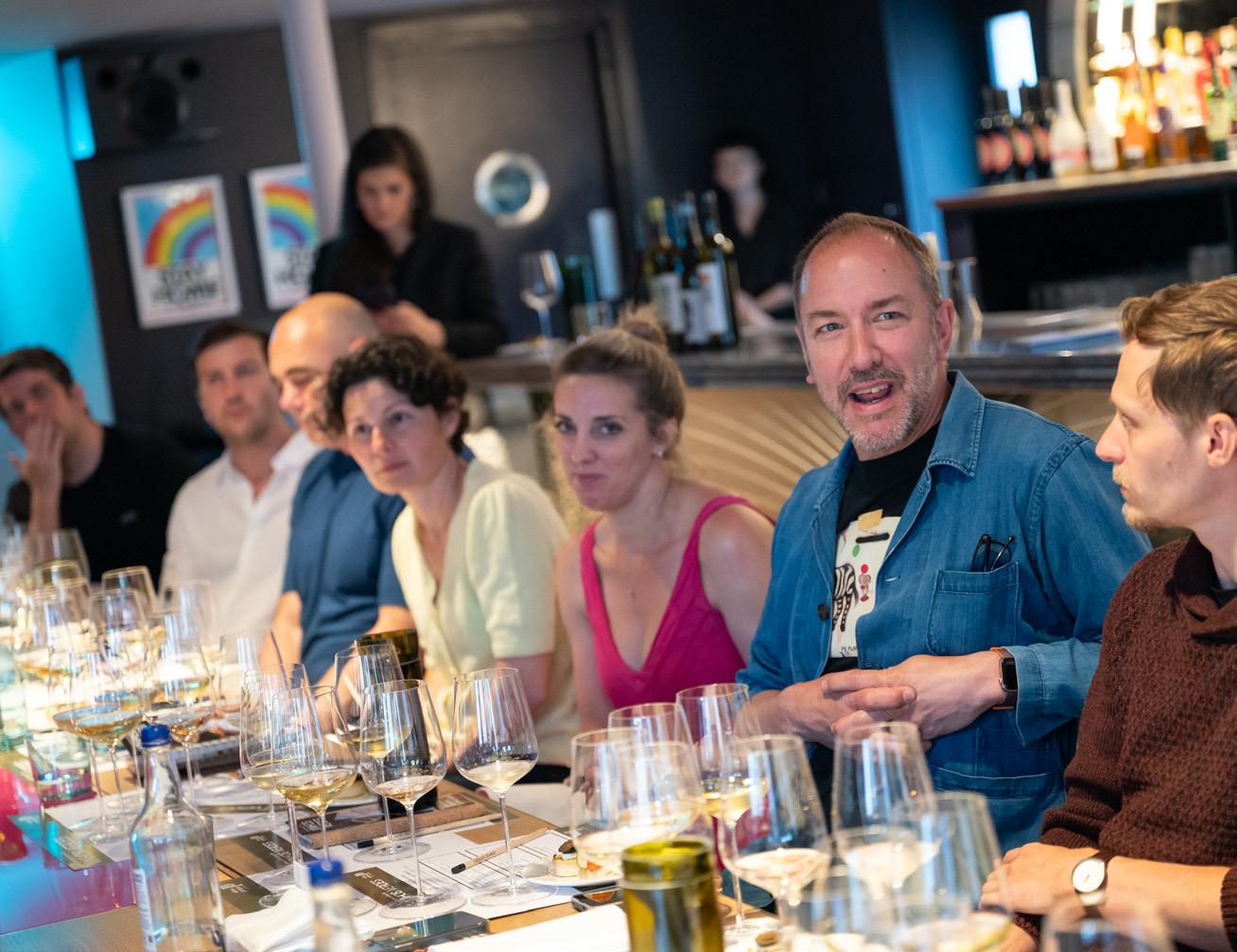
“There’s been a massive increase in sophistication and new techniques, and people being braver to experiment”
terroir is being explored like never before.”
This renewed focus on viticulture has encouraged growers to switch to new trellis systems, which has improved the health and quality of the grapes.
Sarah reports that growers are happy to share their learnings, in the vineyard and the cellar, with others, meaning that innovation and best practice have been spread right across the region.
“All these really young-gun producers are thinking outside of the box, and they’re all talking to each other, they’re all tasting each other’s wines. There’s been a massive increase in sophistication and new techniques, and people being braver to experiment.”
And yet the wines that are being made still retain an unmistakeable sense of place. “Sometimes when winemaking gets modern, it gets very boring and big technocraty; you don’t see any interest or edge in the wines. You totally lose connection with tradition,” Sarah argued.
“Vinho Verde has that signature of freshness and delicacy, but now also a real diversity of style in terms of still, sparkling, old-fashioned malolactic spritz, rosé, red, white …
For more information about Vinho Verde, visit vinhoverde.pt or email info@vinhoverde.pt
“I’m really excited to see the direction of travel in Vinho Verde because I think it has a lot of trump cards, especially going forward, with all the interest and focus on lighter wines.
“It’s definitely going to be seen as a region – and not just a wine.”


Sem Igual, Sem Mal 2021
Importer: Element Wines, RRP £23.95£25.95
This unfiltered, cloudy blend of Azal and Arinto gets the tasting off to a flying start. There’s a natural spritz to the wine, rather than artificial carbonation, and, as Sarah Ahmed says, “it’s all about freshness; it’s all about zippiness”. The producer prides itself on premium wines with longevity, but this one is showing well in its relative youth. Sommelier João Paupério, who’s on hand to offer some foodmatching expertise, says he’d pair the wine’s almost austere acidity with smoky fish. Sarah makes a case for fresh oysters.

Soalheiro, Espumante Brut Rosé NV
Importer: Raymond Reynolds, RRP £20
The only sparkling wine in the tasting is made in the traditional method, and it has a precision and elegance that wows our guests. It’s a judicious blend of Alvarinho, Touriga Nacional and Pinot Noir from the Monção and Melgaço subregion. Although most of the juice comes from the 2022 vintage, there’s some 2021 and 2020 reserve wine blended in, which adds to the complexity. There’s grapefruit acidity and delicate white fruit, and frankly it’s a wine that is perfect on its own, João suggests. But smoked trout, or perhaps a chicken dish, would complement it, he adds.

Quinta do Tamariz, Vinha de Landeiro 2022
Importer: Portuguese Vinhos, RRP £20
This family estate, 20km from the sea, has been bottling its own wines since 1928. It boasts some old Alvarinho clones which add structure and acidity to this rather uncommon blend, which also includes Arinto and Loureiro, the latter contributing a note that reminds Sarah of bay leaf. Each is fermented separately in stainless steel and then aged on lees. “It’s a serious dry wine but with everything you want from Vinho Verde,” says Sarah. João pinpoints the slightly oxidised character, which he says would work well with salt cod and potatoes.


Quinta de Santa Cristina, Batoca 2023
Importer: OPS Wines, RRP £10
Batoca is an almost forgotten grape variety in Vinho Verde, but high up in the inland Basto subregion it loves the granite soil and thrives in the hot days and cool nights. That said, it’s a tricky variety to work with, which may explain why there’s only about 15 hectares of it left. It’s a shame, because this is a lovely wine, with some Pinot Grigio similarities on the nose and palate, but the peach skin notes are countered by an attractive trace bitterness. Asparagus and leek tart would suit this wine nicely, João says.

Portugal Boutique Winery, Gorro 2022
Importer: Seeking distribution, RRP £16
This winemaker-led micro-negociant looks for interesting vineyards to work with, and the results include wines such as this 100% Loureiro sourced from the Lima subregion. The variety is sometimes likened to Riesling and the comparison is definitely apposite in this case, with its faint petrol notes and off-dry honeyed juiciness making an impression on tasters. As Sarah says, for a young wine its development is surprisingly forward; its fruit is matched by a firm backbone of acidity and, once again, a gentle herbal bitterness. João suggests enjoying it with dressed white crab.

Esporão, Quinta do Ameal 2012
Importer: Hatch Mansfield, RRP £20 (for the 2022 vintage)
Sarah selected this 100% Loureiro to demonstrate just how well the variety can age, a quality that’s often overlooked by consumers who enjoy it young. The estate was acquired in 2019 by Esporão, which has since reduced the use of oak in favour of more stainless steel, ceramic egg and cement. For what is ostensibly an entry-level wine, this has aged very well: as the concentrated fruit has gently faded, petrol notes have come to the fore, but there’s still a remarkable lime-tinged acidity and a hint of oyster shell. Another candidate for dressed crab, João advises.

The Wine Detective, an expert in Portuguese wines, went on a mission to Vinho Verde to unearth wines she feels represent some of the most interesting trends in the region
Quinta da Raza, Vinha de Lamelas 2022
Importer: Raymond Reynolds, RRP £18
You’ll find plenty of Gouveio in the Douro, but not so much in Vinho Verde, so Quinta da Raza’s decision seven years ago to plant it in the Basto subregion rather went against the grain. But the elevation of the region’s steep slopes and the poor, schist soils bring out some of the variety’s best characteristics, which in this case include yellow plum and stone fruit flavours and a herbal note that Sarah likens to angelica. There’s a texture that contrasts interestingly with the freshness and minerality you’d expect from Vinho Verde. João’s pairing suggestion is tuna tartare
A&D Wines, Quinta de Santa Teresa 2021
Importer: Marta Vine/Graft Wine Co, RRP £20
Sarah enthuses about the way Avesso is flourishing in Baião, in the south eastern corner of Vinho Verde, adjacent to the Douro region. Here the hotter summers and cooler nights suit the late-ripening variety down to the granite-rich ground, and in this case it emerges with a silky texture and a plush palate of white peaches. A&D is Vinho Verde’s largest organic estate, at 45 hectares, and needs no cultured yeast, malo, filtration or oak to bring out the best in this wine, which would be enjoyed locally with kid goat.
Quinta de Santiago & Mira do Ó, Sou 2021
Importer: Festa Wine/Graft Wine Co, RRP £40
The Moncão vineyard that produces this singleparcel Alvarinho is on clay and stretches down to the Minho river. The fruit can become surprisingly full-bodied but since 2015 it’s been harvested much earlier, to create lighter wines with more poise and tension. A portion is fermented in barrel, to minimise Alvarinho’s bitterness. It’s a superb, ethereal wine that almost evaporates in the mouth, leaving a delicate oyster shell flavour. It would go perfectly with lamb or – again – young goat, João suggests.






Quinta do Regueiro, Maturado 2019
Importer: OPS Wines, RRP £30
Another 100% Alvarinho, this time from the Melgaço subregion, from a producer that makes “muscular, structured wines that age well”, Sarah says. She picks out primary flavours of apricot and yellow plum that are holding up well after five years, making the wine still taste quite young. But the balance between fruit, alcohol, acidity and aroma is perfect, and there’s little doubt among the guests in the room that this is a wine that could age well for several years to come. It’s another wine that calls for lamb, says João, and it’s a theory we are able to put to the test and confirm with our canapés.
Quinta da Covela, Rosé 2023
Importer: Seeking distribution, RRP £18
Rosé is a small but growing category in Vinho Verde and this 100% Touriga Nacional example is a useful calling card. Sarah describes the organic estate in Baião as progressive and quality-obsessed, and the attention to detail certainly shows here. Touriga’s signature floral notes are detectable, and lees ageing adds a little extra body, but ultimately this is a fresh and delicate rosé that bears some key hallmarks of Vinho Verde. “There’s a wonderful acidity that doesn’t feel played around with,” she says. João suggests the wine’s umami character suits sugar pit bacon.
Importer: Les Caves de Pyrene, RRP £28-£38
Red wines from Vinho Verde are “super-niche at the moment, but super-exciting as well”, Sarah says. This one, from a pioneer of biodynamic viticulture in Lima, is made in what the producer describes as his “medieval cellar” with no electricity, such is the commitment to natural winemaking. It’s 100% Alvarelhão, a variety that has some similarities to Pinot Noir both in the cellar and in the glass. It’s light and faintly smoky, with forest floor and red fruit notes. João advises against pairing it with complex dishes; salty fish works just fine.

Ciacci Piccolomini d’Aragona is a glorious family-owned 195-hectare estate in Montalcino, Tuscany, with origins dating back to the 17th century. Co-owner and winemaker Paolo Bianchini talks about how the current generation’s challenges differ, and sometimes align, with those of their predecessors
You have a magnificent estate in a magnificent region. Does this mean you feel a duty to produce classic wines that live up to Montalcino’s global reputation – or are you able to experiment a little and stamp your personality on the wines?
Our main goal is producing wines that can say something about us and at the same time reflect the terroir, following and carefully respecting the standards imposed by the Brunello di Montalcino DOCG and Rosso di Montalcino DOC appellations.
We want to produce wines up to the region’s global reputation as well as express ourselves and communicate the challenging work behind creating our labels.
My father Giuseppe Bianchini, when he was planting the first vineyards at the end of the 80s, wanted to have some Merlot and Cabernet Sauvignon, and later, at the end of the 90s, some Syrah as well.
We produce a blend with Merlot and Cabernet Sauvignon (ATEO) and a pure Syrah (FABIVS). Both these wines are classified as Sant’antimo DOC, which is an appellation in Montalcino allowing nonSangiovese grapes. There, for sure, we can give free rein to our productive creativity.
How would you sum up your winemaking philosophy?
Loyalty to the terroir; elegance, authenticity, and sustainability.
When the company was founded in 1985, my father was a very traditional producer of Brunello



di Montalcino. Since his passing 20 years ago, my sister Lucia and I have always tried to maintain that tradition and at the same time look forward and always improve where possible.
Our aim today is not only to be faithful to our history but also take the winery towards the future by always trying to learn new things and improve ourselves.
You have two cellars. Tell us how this came about and what each is used for.
The historic Palazzo underground cellar was excavated in the 17th century. This was our first production cellar: my father restored it in 1985 when he inherited the property from Countess Elda, and we produced wine there until 2004.
Since then, due to logistics, it’s been used as a wine library where we cherish our private bottle collection of all the vintages produced since 1990.
The modern cellar, Molinello, was designed by my father when the first one became too small. It was opened in 2004. This is our production hub and we use it for fermentation, refinement, bottling, storage and shipping.
Do you think Italian producers have always had a keen sense of their terroir, and its effect on their wines, or is this a science that’s only recently been explored?
I think it has always been that way.
An example is our appellation which, since its inception, has based the production of Brunello di Montalcino DOCG and Rosso di Montalcino
DOC on the specific geographical position of the municipality. Within this, it is possible to identify distinctive slopes with specific and recognisable characteristics.
What may seem like a new discovery to some today has always been fundamental for us. For example, we know that, from the north to the south of our region, there are variations in the composition of the soil, the average temperature and the amount of annual rainfall.
Within our own property, we recognise Pianrosso as our best area for soil, exposure and exposition. Here we grow the grapes for our single-vineyard Pianrosso wine and the Riserva Vigna di Pianrosso Santa Caterina d’Oro.
Terroir is certainly fundamental.
How much vintage variation do you experience and how much effect do you see from climate change?
We’ve noticed very important changes, for sure. Over the past 20 years, the calendar of activities in the vineyard has changed a lot. This has brought forward some activities such as green pruning, and the phenological calendar has been significantly shortened, leading to a more variable harvest period.
In the past it was almost certain that the harvest would not take place until the third week of September. Today, on our slope, we start with checks in the vineyard from the first days of that month.
The wines from the coming vintages will certainly be powerful and elegant but will require greater care during harvesting and fermentation to give their best.
Experience and knowledge of the area will be fundamental in the years to come.
Do organic practices and sustainability initiatives fit into your business?
Yes. For many years we have practiced a conscious approach to organic farming and activities that can increase biodiversity. We think that a better environment can be a benefit.
We use green manure and we use only organic treatments on our vines. We have noticed that all

these measures, from the smallest to the largest, while demanding, bring significant advantages. Not only to the ecosystem but also to the health of the plant, the consistency of the soil and the final quality of the wine.
Tell us about the grappa and olive oil. Are these fun elements of the portfolio or do they get taken as seriously as the wine?
We take all our production very seriously. Our Olio Extravergine di Oliva Biologico is made with a blend of four Tuscan aromatic varieties and cold pressed – a fundamental Tuscan tradition for which we also have an organic certification.
Contact Mentzendorff for more information: mentzendorff.co.uk 020 7840 3600
Grappa di Brunello di Montalcino Riserva di Pianrosso was first made by my father. It started as a modest element of the portfolio but over the years it has cemented itself as an integral part of our production. We make it in very small quantities, using pomace from Pianrosso grapes, aged in French and American oak toast barriques for 18 months and then packaged in special bottles that are tailor-made for us.

David Williams reports on how South American winemakers have been raising their game

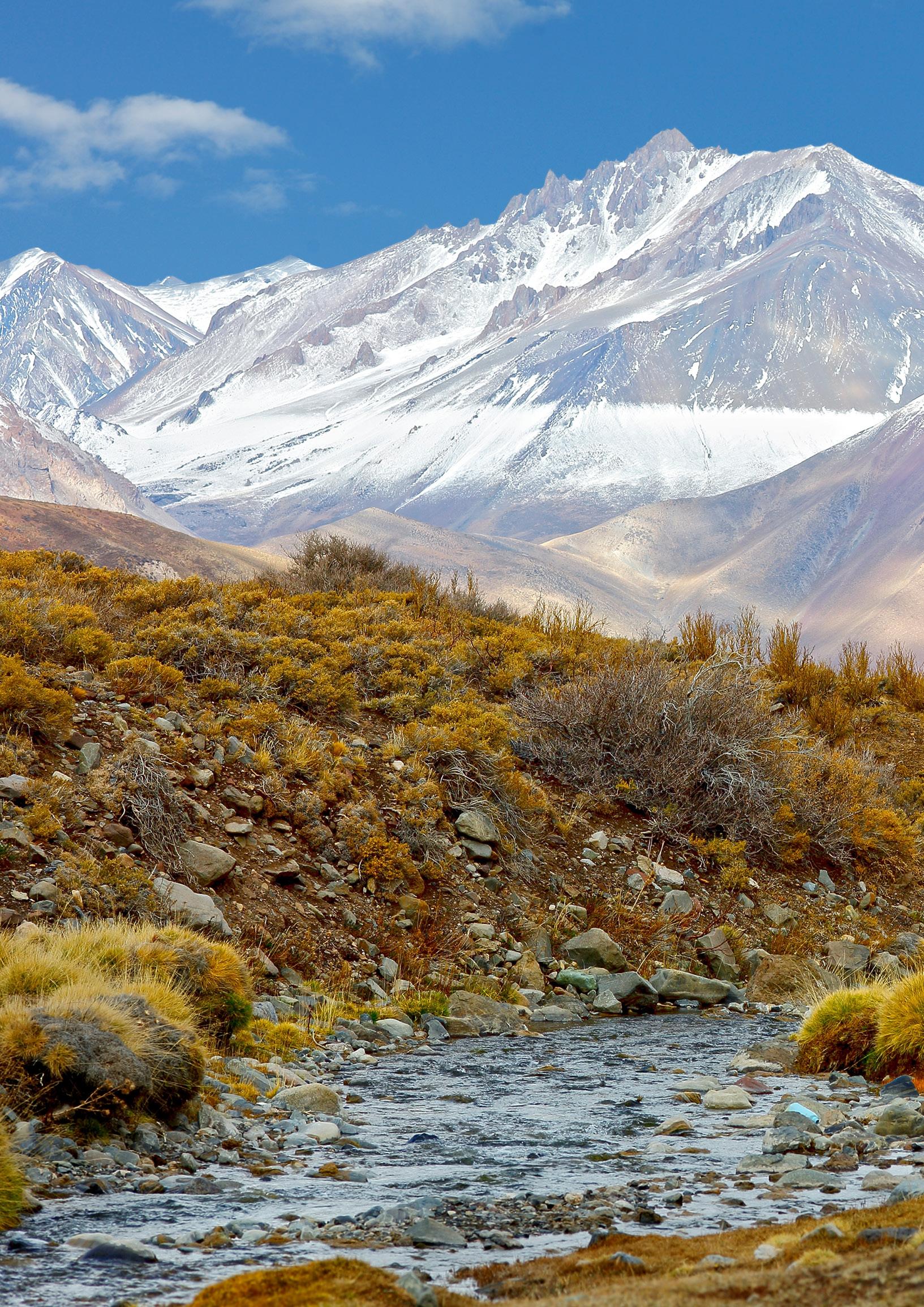
Terroir, blends and old vines: the three factors shaping South America’s most intriguing modern wines
Like the rest of their peers outside Europe, the two giants of South American wine, Argentina and Chile, have built their reputations on single-varietal wines. But, while few producers in either country are likely to give up on making wines in which Malbec, Cabernet Sauvignon, Carmenère, Torrontés et al play the starring, solo role, an increasing number of the continent’s best bottles are blends, and often rather exotic and unusual blends at that.
That’s true in both colours. One of Argentina’s finest white wines, Susana Balbo’s Signature White Blend, from Paraje Altamira in the Uco Valley, is a distinctively Argentine take on the Bordeaux white blend, a mix of Sauvignon Blanc and Sémillon with Torrontés playing the Muscadelle role in the classic trio. Chile’s best-performing white in this year’s Wine Merchant Top 100, meanwhile, was the scintillating Viña Estampa Inspiracion white blend, a Mediterranean Italian mix of Fiano, Vermentino and Greco from vineyards near to the Pacific in Paredones, Colchagua.
The obvious affinities between Malbec and Cabernet Franc are increasingly being expressed in some of Argentina’s best reds, with Mauricio Lorca’s “Natural” 50/50 Mendoza blend of the two building a deliciously convincing case for the pairing. In Uruguay, Tannat has a natural partner in Cabernet (as it does in Tannat’s home back in Madiran), but also with the Tannat-Cabernet Sauvignon crossing Arinarnoa, as found in Bodegas Cerro Chapeu Since 1752 Gran Tradicion.
Also showing increasingly well across the continent in both colours are Rhône, or Mediterranean-style blends. Notable successes can be found in Chile’s Maule Valley, and include Morandé Adventure Mediterraneo, a wonderfully savoury, fragrant mix of Grenache and a mix of red and white Rhône varieties (Syrah, Carignan, Marsanne and Roussanne); and TH Rarities GarnachaCariñena-Monastrell from Undurraga, the never-less-than interesting producer which also makes a striking, unique Red Field Blend from old-vine Maule Malbec, Cabernet Sauvignon, Cinsault and País.

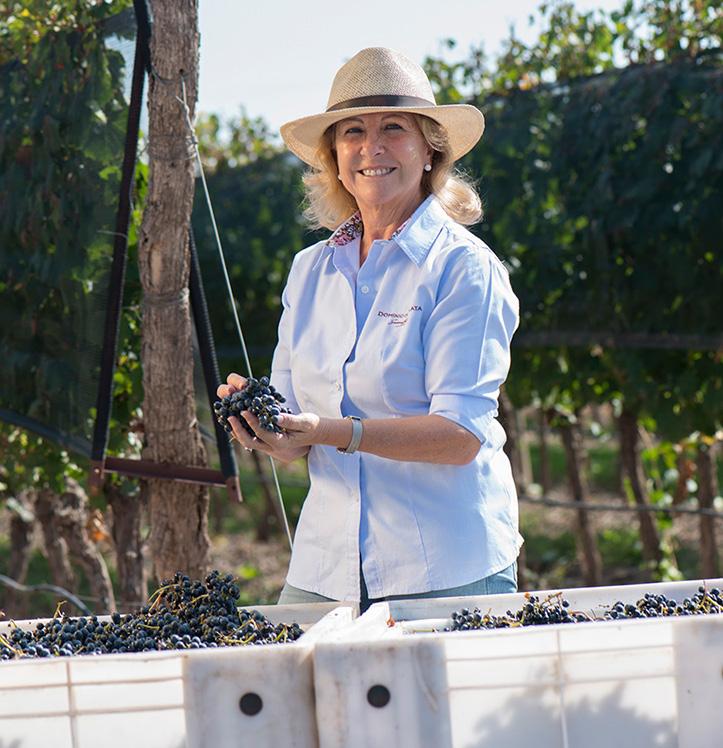




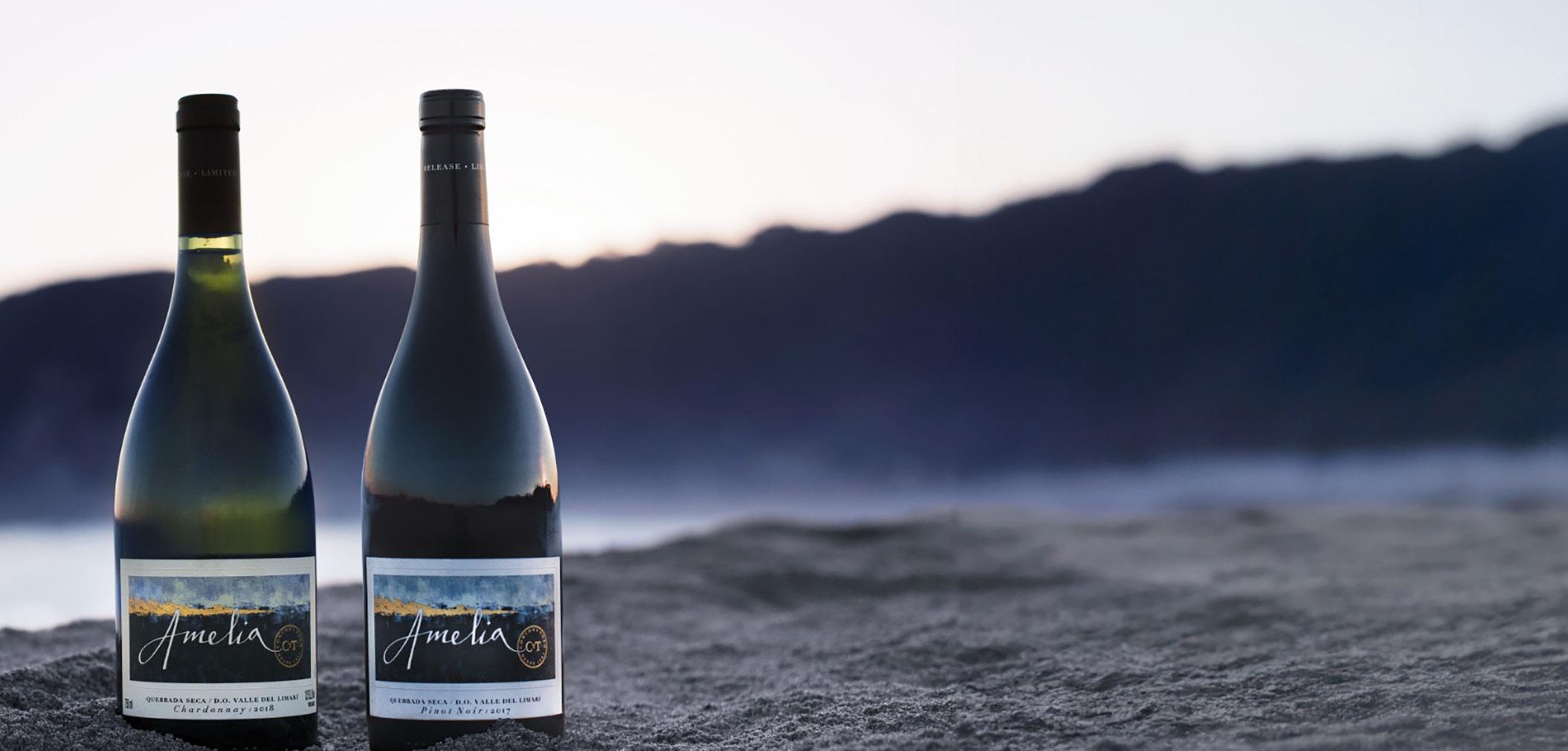
It’s possible, though unlikely, that you have been to Limarí, a rather dry and barren region just south of Chile’s Atacama desert. Until fairly recently, the main draws were copper mining and pisco production.
Marcelo Papa, now Concha y Toro’s technical director, first arrived in 1996, before Limarí was generating much excitement in winemaking circles. Papa was struck by what he saw on the land (cacti) and in the nearby Pacific (“the water temperature is only 15˚C – we don’t have sharks, we have penguins”).
He was also intrigued by the weather patterns: cloud in the morning, sea breezes and sunshine later in the day. Maybe, he began to think, this could be an interesting place for Chardonnay and Pinot Noir.
Concha y Toro took the plunge in 2007, buying a sheltered 65-hectare estate named Quebrada Seca, 23km from the coast. The vines went into the ground and the waiting game began.
Papa needed to understand more about the earth into which the young vines were

Marcelo Papa’s faith in the Chilean region has been justified by the quality of his Amelia Chardonnay and Pinot Noir
sending their roots. A ground survey was commissioned, revealing that there were two distinct soil types.
The first, simply called Quebrada Seca, is an iron-rich clay laced with decomposed limestone, which suits Chardonnay. The second, Santa Cristina, has a similar red colour, but is much rockier, with no calcium carbonate in its top layer. It’s ideal for Pinot Noir.
Concha y Toro’s super-premium Amelia label had been launched in 1993, using Casablanca grapes that gave a sweeter, more tropical flavour. By 2017, Papa had convinced his team that, from now on, Amelia fruit should be sourced exclusively from the Limarí estate. The style became more precise, more intricate, with a salty, mineral finish that reflects the place in which the grapes were grown.
And this, to Papa’s mind, is the whole point of the exercise. Amelia Chardonnay “could embarrass a range of PulignyMontrachet in a blind tasting,” according to Tim Atkin MW. But Papa prefers not to think of it as an homage to any classic

style, or indeed as a Chardonnay. The variety was selected purely for its ability to channel the flavours and the character of this spellbinding terroir.
That’s the thinking, too, with Amelia Pinot Noir. Like the Chardonnay, it sees about a year in (mainly second-use) French oak, and again the temptation is to draw comparisons with Burgundy. But Papa is not trying to imitate anything from Chambolle or Vosne-Romanée, any more than he is trying to make the perfect new world Pinot. The variety is simply chosen because it harmonises with the landscape. The wine it produces is full of red-cherry ripeness but with layers of mineral complexity that tell a story of the ancient Limarí soils.
This is a region that wine explorers should think of as “a new and very serious player” in the fine wine market, Papa says.
“The wines are ready to compete, to challenge the palates of people who love Chardonnay and Pinot Noir and show consumers what we are doing in the southern hemisphere.”
Published in association with CyT UK
Amelia Chardonnay and Pinot Noir are available to the independent trade direct from CyT UK, with an RRP of £45.
For more information about these and other premium Chilean wines that the company offers, contact Joe Fattorini: jfattorini@cyt-uk.com
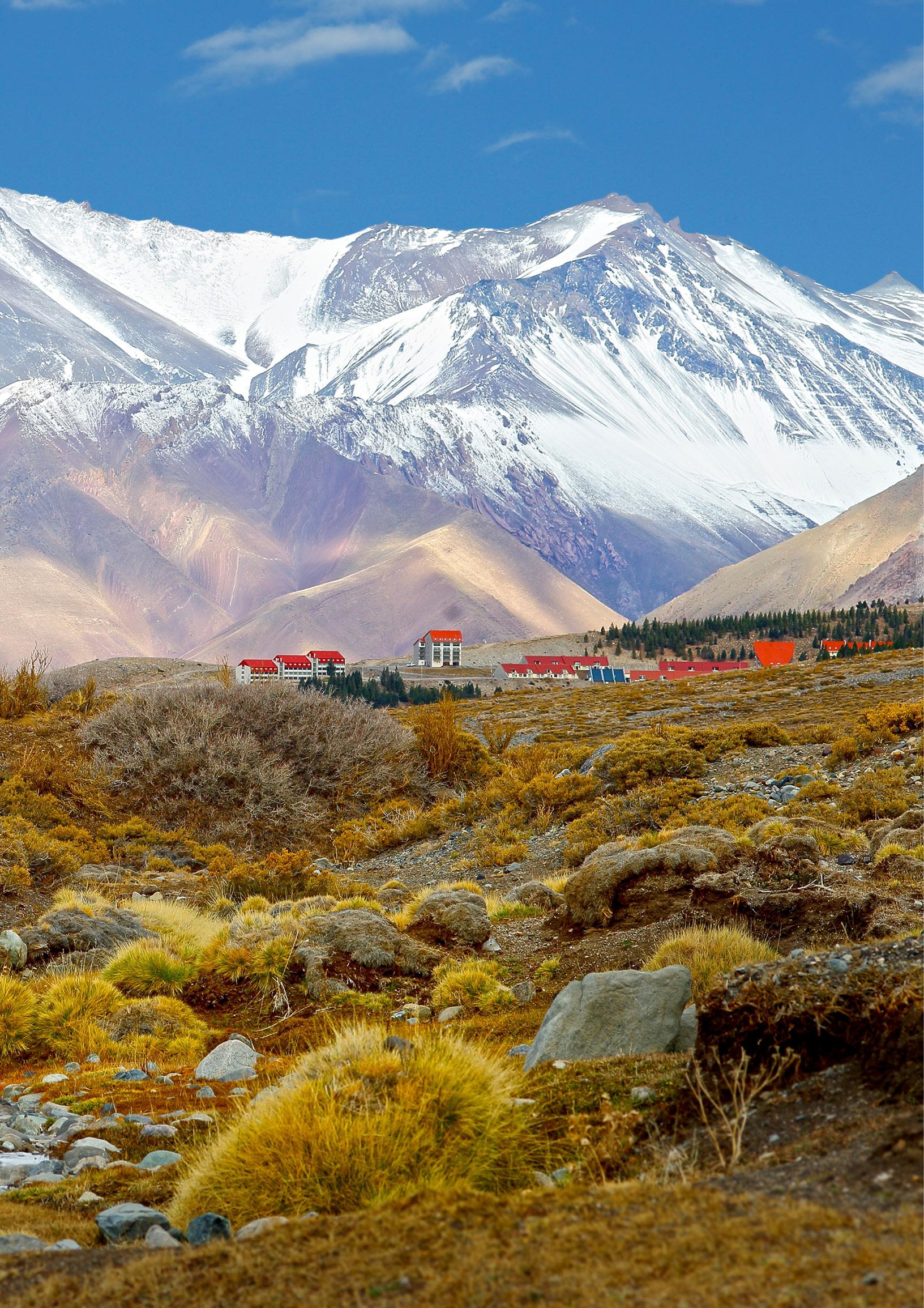

To adapt Ernest Hemingway’s famous quip about bankruptcy, the emergence of South American regionality has happened in two ways: gradually, then suddenly. Or perhaps it’s more like London buses: you wait decades for a great South American subregion to emerge and then dozens come along all at once. However you look at it, the past decade has seen a remarkable shift in focus among South American winemakers towards identifying, defining, protecting and promoting their best terroirs – and making wines that reflect their individual characters.
While Bolivia, Brazil and Peru have some fascinating, and potentially great, developing subregions, and Uruguay has already made a name for its coastal, Albariño-welcoming Maldonado, the established star terroirs so far are largely concentrated in Argentina and Chile.
On the eastern side of the Andes, Argentinian winemakers have spent the years since 2010 attempting to move understanding of Argentinian regionality away from its foundation in political boundaries towards GIs that reflect specific winegrowing conditions. Among the names to look out for are a trio from the Uco Valley: Paraje Altamira, a long-respected star of Malbec and Sémillon; the almost-Burgundian range of micro-climates and soils in Los Chacayes, with its ageworthy Malbec, Cabernet and Garnacha; and the high-altitude cool of Guatallary, with its particularly fragrant Malbec, Cabernet Franc and Chardonnay.
The defining terroirs of Chile, meanwhile, include the deep-south cool of Malleco, home of some of the country’s most exciting Pinot Noirs, Chardonnays and Rieslings, and the old-vine País and Cinsault haven of Guarilihue in the coastal hills of Itata. Then there are the higher reaches of the classic heartland of Chilean Cabernet in the Maipo Andes, and the excitingly edgy wines emerging from the very dry conditions north of Santiago: the limestone terroirs of Limarí, through Viñedos Alcohuaz in Elqui and Ventisquero’s Tara project in the Atacama Desert.
It should come as no surprise to learn that the inaugural winner of the Old Vine Conference’s Old Vines Hero Award in 2023 was a South American. Laura Catena, who picked up the award for her work on preserving, understanding and sharing information about the old-vine Malbec her family has in abundance across their estate in Mendoza, is one of growing group of South American winegrowers who are putting the continent’s remarkable old-vine heritage back in the limelight – and in the process are making some of South America’s finest wines.
This is by no means a mere marketing exercise. It’s certainly not the easiest way to make a living. Indeed the economics, not least at a time of global financial turmoil in which both Chile and Argentina are battling with a raft of economic tailwinds, are very much against old vine wines.
As Francisco Baettig, who quit his long-term role as head winemaker at Errazuriz to commit full-time to his own dryfarmed project in Malleco at the end of last year, explains: “When you grow 100-year-old, or 80-year-old vines, the production is nothing. You can’t charge cheap prices, because you can't get a business out of it. But once you put the prices a little higher, especially the lesser-known varieties, it’s very challenging to sell the wines, even if they're beautiful.”
All the more reason, then, to praise the South American winemakers responsible for the quite remarkable flourishing of the continent’s old-vine wines over the past few years. In Chile, a list of recent favourites might start with the ethereal, graceful oldvine País and Cinsault wines (Monk Cinsault; Imaginador) made by the much-in-demand globe-trotting vineyard soil consultant Pedro Parra in Guarilihue; Undurraga’s darkly savoury Vigno Carignan from Sauzal in the Maule; and Santa Rita’s dark but polished Floresta expression of old-vine Carmenère from Apalta in the Colchangua Valley.
In Argentina, Catena’s Argentino, is a thrilling exhibition of the extra intensity and velvety texture available from very old-vine Malbec, while Matias Riccitelli has a pair of bottlings from Patagonia that demonstrate, respectively, the vibrancy and eclectic acidity of old-vine Sémillon and the redcurrant-cherry charge of old-vine Bastardo (aka Trousseau), as well as a Mendoza red made with his winemaker father, Riccardo (Riccitelli & Father) that combines 100-year-old ungrafted Malbec from Las Compuertas in Luján de Cuyo with a 20% component of Cabernet Franc from Los Chacayes.
Maybe, in the future, we won’t be talking much about Argentine Malbec. Which would make perfect sense to Juan Pablo Murgia, technical director at Bodegas Argento and Otronia.
What’s he getting at? He gives the example of Gualtallary and Paraje Altamira. These are locations where Argentina’s leading winemakers do some of their best work.
“We are producing wines from the best places in the heart of Paraje Altamira and in Gualtallary: both Uco Valley, both Malbec,” Juan Pablo says.
Vines on Santorini
“But they are completely different places, and the [respective] characteristics of the wines are so, so typical and so different. If you are producing very sharp-focus Gualtallary and Altamira Malbecs, they are so specific that you always identify them when you’re tasting. And I think it’s important to give a name to those differences.”
This is where Argentina’s Indicación Geografica (usually referred to in English as GI) system comes into play. These GIs originally corresponded to political boundaries and could be so huge as to be almost meaningless. For example, there’s a GI that covers all of the vast and varied Mendoza province.
But increasingly, GIs have been created that represent smaller areas, and to a large extent they’ve become more important than Argentina’s DOC system.
Over the past decade or so, significant GIs such as Paraje Altamira (2013), San Pablo (2019) and Pampa El Cepillo (2019) have been approved. These are regions that have been marked out purely on the basis of weather conditions, soil type and wine style. Dozens of other GIs have followed.
Making the case for a new GI can be complicated and controversial, especially if neighbouring producers don’t see eye to eye about where boundaries begin and end, or how the wine should be officially described.
That wasn’t a problem for Juan Pablo and the Otronia team when they campaigned

Juan Pablo Murgia of Bodega Argento says the rise in Geographic Indications shows how far the country has come
for the Sarmiento GI.
This region, on the edge of a cold desert in the Patagonian Steppe, only has one wine producer, and that’s Otronia. Here, with the help of irrigation and seemingly against the odds, vines are thriving. The 2024 Pinot Noir crop, Juan Pablo reports, is “the best I have ever seen”.
To obtain the Sarmiento GI, “we had to demonstrate specific weather conditions, a specific soil and a specific characteristic to the grapes and of course in the wines,” Juan Pablo says. “You can’t do it all by yourself: you have to work with a public institution.”
Why go to all the trouble? Juan Pablo believes it’s a natural part of Argentina’s evolution since the 1970s from a bulk-wine producing nation into a country whose wines deserve to take their place among the world’s elite.
“Hopefully, in the future, if we can get deeper into this, we shouldn’t be talking about Malbec. We should be only talking about, say, Altamira, or Gualtallary. Altamira should be a Malbec, for me. Gualtallary could be a Malbec and could be a Chardonnay; Cabernet Franc is working well there too.
“If you go to Burgundy or Beaujolais, you’re drinking Pinot Noir or Gamay but
nobody’s talking about the grapes. If you go to a Sancerre producer, and you say, ‘I like your Sauvignon Blanc’, they’re going to say, ‘what are you talking about?’”
“We are going in that direction. Of course, Malbec is so powerful in Argentina right now. But to differentiate those profiles, you need the geographical indication.”
It makes perfect sense to a winemaker like Juan Pablo, whose focus on precision viticulture means he often fixates not just on subregions or individual vineyards, but even smaller areas.
“Producers are working on parcel or micro-parcel wines,” he says. “Otronia Chardonnay is a parcel wine, coming from two plots of half a hectare each. Argentina started out in the 70s with grapes coming from anywhere to produce entry-level wine. And now we are talking about wines that are coming from specific vines.”
Published in association with Grupo Avinea
Argento wines are imported by Bibendum and Otronia wines by Liberty Wines
Find out more at bodegaargento. com and otronia.com
Condor Wines invited a group of independents to put a selection of its top Chilean wines through their paces, alongside a discussion of how best to sell the category to consumers
In June, a group of indies came together at the Embassy of Chile to taste a selection of the country’s premium wines. Hosted by South American specialist Condor Wines, it made for a stimulating and delicious morning, rounded off with a lunch of Chilean specialities.
Just for fun, and to see whether Chilean premium wines deliver at their price point, Condor selected three wines to be tasted blind. This wasn’t about identifying grapes, but getting a feel for what the wines are worth. There were three suggested price brackets: £10 to £20, £20 to £30 and £30+.
Condor and the team at Viña Requingua would be delighted with a near unanimous view that their Carménère/Cabernet Sauvignon was worth more than its £16.49 RRP, with most putting it in the £20 to £30 bracket. Guests described it as “absolutely delicious”, “spicy and structured”, with “white and black pepper, nutty notes … very much a Cabernet / Carménère blend.”
Equally, nearly everyone picked out the Dagaz Kolwe Cabernet Sauvignon as the most complex and priciest (£34.29). “The most intriguing for me, having structurally the most to offer with great length,” said

Mario Sposito of Bedales.
This was a view echoed by Charlotte Dean of Wined Up Here, who described it as “the most complex of the wines, but it needs time to develop”.
Discussing the prices generally, the merchants felt that Chile offers good value for money. “People will pay the money for these wines … it’s important that they look the part, and that there are stories behind the wines,” said Gosia Wegier of Dulwich Vintners. “Nobody ever says they don’t like Chilean wine, in the way that they can do with, say, France. But Chile is quite difficult to explain to people.”
For those who have been selling wines since Chile first made an appearance on the UK market (and it was possible to buy three bottles for £10), there was an awareness that it is the role of independents to show what the country has to offer at the premium end.
In a free-ranging discussion as how best to do this, there was a lot of talk of the need for a cultural handle; an easy connection for consumers.
Grapes were an obvious starter for 10. With the Argentina/Malbec story so strong, it was felt that Chile could be doing more in a similar vein. “Pais is Beaujolaisesque, it can be served chilled and offers the sort of style of red that customers are asking for,” said Jakub Balsamski of Hedonism Wines.
Gosia Wegier added: “Chile needs to focus on something – Pais, Carménère –and to make it clear why customers should be looking at Chile over other countries.”
There were positive comments about the diversity and innovation on show in the 13-strong line-up. Smaller-scale producers such as Matt Ridgway and his wife Ana, at La Despensa Boutique, have a compelling story to tell alongside their impressive wines: characterful field blends from diverse varieties (including Sangiovese), and their much-admired Pais. Though operating on a much greater scale, the Lurton family have delivered a commercially-sound orange wine in Naranjo. The merchants agreed it has the potential to be a good seller, despite being in a competitive market.
Gosia Wegier, Dulwich Vintners
“The Chardonnay was a highlight for me: rounded, well-structured and beautifully put together, at a very good price point: a great alternative to white Burgundy. The orange wine was good, but it has a lot of competition. The Pais is great and can be chilled in the fridge. The Dagaz wines were really good. Overall, I was very impressed.”
Jakub Balsamski, Hedonism Wines
“The Pais: great old vines, lovely fruit … a wine that I can offer chilled. It comes at an excellent price.”
Charlotte Dean, Wined Up Here
“The Dagaz wines stood out for me: elegant and wellmade, with great presentation, which is very important.”

Mario Sposito, Bedales
“Laku has a sense of location and, while it comes at a price, this is a wine that is Chile, and cannot be made anywhere else. It has complexity, lovely fruit, balsamic notes, basil … the flavours I associate with Chile. This is a wine that solves some of the challenges Chile has.”
Gabor Juhasz, Shepherd Market Wine House
“Pais is a great daytime drinking wine, and it has a point of difference.”
The pressure on old-world regions, such as Burgundy, offers Chile’s Chardonnay wines a useful opportunity. The feedback on the Tectonia Chardonnay was particularly positive in terms of the quality and value it offers. Aaron Irons from Condor was quick to point out that Chile has “an embarrassment of old vines” and this is a further message to underpin Chile’s credentials as an alternative for lovers of old-world wines.
Charlotte Dean felt that “lifestyle marketing could be stronger, and is more important than banging on about soil types”. The view was echoed by fellow indies, who added that the immense scale of Chile meant that hooks around food and wine pairings could be a more straightforward way to talk about the wines, rather than subregions and individual vineyard terroir.
Cue a spot of lunch and a delicious spread of Chilean cuisine. With open bottles on the table, and plates being filled, some tempting combinations weren’t long in the making.
The Lolol Single Vineyard White Blend proved to be a great match for the ceviche. The pastel de choclo – a meat pie, with a sweetcorn topping – had a spicy, savoury flavour that worked a treat with the Toro de Piedra Carignan. Of course, there had to be empanadas, and truthfully any of the reds were a delight to drink with them. Mini alfajor – a dangerously moreish chocolate sandwich cake – didn’t necessarily find its wine match on the day, but customers would be knocking down the doors in a rush to eat them should a Chilean wine and food event ever be on the cards.
It was an immensely enjoyable tasting that left a strong impression that the future of premium Chilean wine is bright. The task now is to settle on a narrative that will lead consumers to these wines.

Hacienda Araucano, Clo de Lolol Single Vineyard Red Blend 2020, Colchagua Valley, RRP £23.79
Viña Dagaz, Kolwe Estate Cabernet Sauvignon 2019, Colchagua Valley, RRP £34.29

Viña Requingua, Toro de Piedra Grand Reserve Carménère –Cabernet Sauvignon 2021, Maule Valley, RRP £16.49
Bodega Volcanes de Chile, Tectonia Chardonnay 2019, Malleco Valley, RRP £21.79
Hacienda Araucano, Clo de Lolol Single Vineyard White Blend 2021, Colchagua Valley, RRP £23.79
Hacienda Araucano, Humo Blanco L’Atelier Naranjo 2022, Colchagua Valley, RRP £19.79
La Despensa Boutique, Estate Pais 2021, Colchagua Valley, RRP £20.99
La Despensa Boutique, Estate Field Blend 2020, Colchagua Valley, RRP £22.29
Viña Requingua, Toro de Piedra Gran Reserva Carignan 2020, Maule Valley, RRP £16.49
Viña Dagaz, Cuvée El Camino 2021, Colchagua Valley, RRP £15.49
Viña Dagaz, Tierras de Pumanque 2018, Colchagua Valley, RRP £44.49
Bodega Volcanes de Chile, Parinacota 2019, Maule Valley, RRP £28.79
Viña Requingua, Laku Secret Blend 2019, Central Valley, RRP £47.99


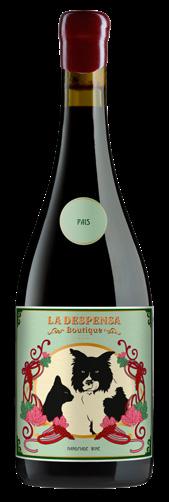
Contact Aaron Irons at Condor on 07715 671914 or visit condorwines.co.uk

Recently I have started a new set of affirmations: I live without worry and fear. I do my best with the task at hand. I live without jealousy and guilt. Which would be fine if I lived in a vacuum, but alas at this point in time I do not. I live in a world where people steal my stuff, in particular my Replacement Lunch Peanut Butter. No pointing elbows Ann Meikle. But at least Ann buys me replacement Replacement Lunch Peanut Butter. Thank you for your equitable humility, Ann. It’s difficult to be humble when you have a flashy name. Not that Phoebe is particularly flashy these days, but when I was a lad, when everybody was called John or Euan, it sure was. There were certainly no novelty items with Phoebe written on them in garden centres, not like today; today I had to have a word with myself to stop purchasing a can of magical beans that would apparently grow with my name written on a leaf. Witchcraft! (I should have bought it. Even now I feel the lack.)
Not that I’m actually called Phoebe. Having the benefit of two significantly older brothers, John and Euan (not their real names), I was affectionately referred

Phoebe Weller of Valhalla’s Goat in Glasgow isn’t really called Phoebe, and neither is she the creator of Fleabag
to in utero as Phoebe the Foetus. It stuck – but not hard enough for it to go on my birth certificate, which has caused all sorts of problems since. But problems are also solutions, aren’t they? As LongSuffering Tony says, If it’s in the way it becomes the way, some stoic shite filtered through Tim Ferrets, who should be avoided at all costs.
When I was 16 a girl transferred to our school because she was getting in trouble with boys, in particular Euan and John. She was a wizard on the fiddle, she was gorgeous, she spoke German fluently, she

had her belly-button pierced, she was really cool and she had a surname. She’s spent the last 24 years working hard and doing some really cool stuff and playing her fiddle like a wizard. I was surprised when she dropped her last name to take on my fake name, but was happy in the knowledge that she thought I was cool enough to be her last name, which although not a surname is flashy. It must be funny for her, I thought, that I appear in her mind every time she’s introduced alongside Shania Twain or Jethro Tull. It’s like I’m, in a small part, there.
The last time I appeared on Radio Scotland’s Loose Wummin, the presenter introduced me as Phoebe Waller [Pause]. I could see why because Phoebe Weller is definitely in the same ballpark as Phoebe Waller [Pause] but it is not my name. She has an extra name and also Waller is definitely jazzier than holy Weller.
It’s difficult because young me, who played wrong notes on a double bass next to the Fiddle Wizard before she mislaid her surname, desperately wanted to be a writer/actress courted internationally for her writing and performing talents. You’re dead like that Phoebe Waller-Bridge, the captain of the Quidditch team told me, prick. Now I can’t even go on the bloody local radio to talk about whatever cheese and wine bullshit Tick-Tick is wanging on about without being reminded that I spent 10 years getting high and watching the same four episodes of Deep Space Nine rather than Honing my Craft like PWB.
Pleasing, then, that along comes Phoebe Bridgers, apparently, who has stolen PWB’s name and has more Instagram followers. I wonder if I should reach out?
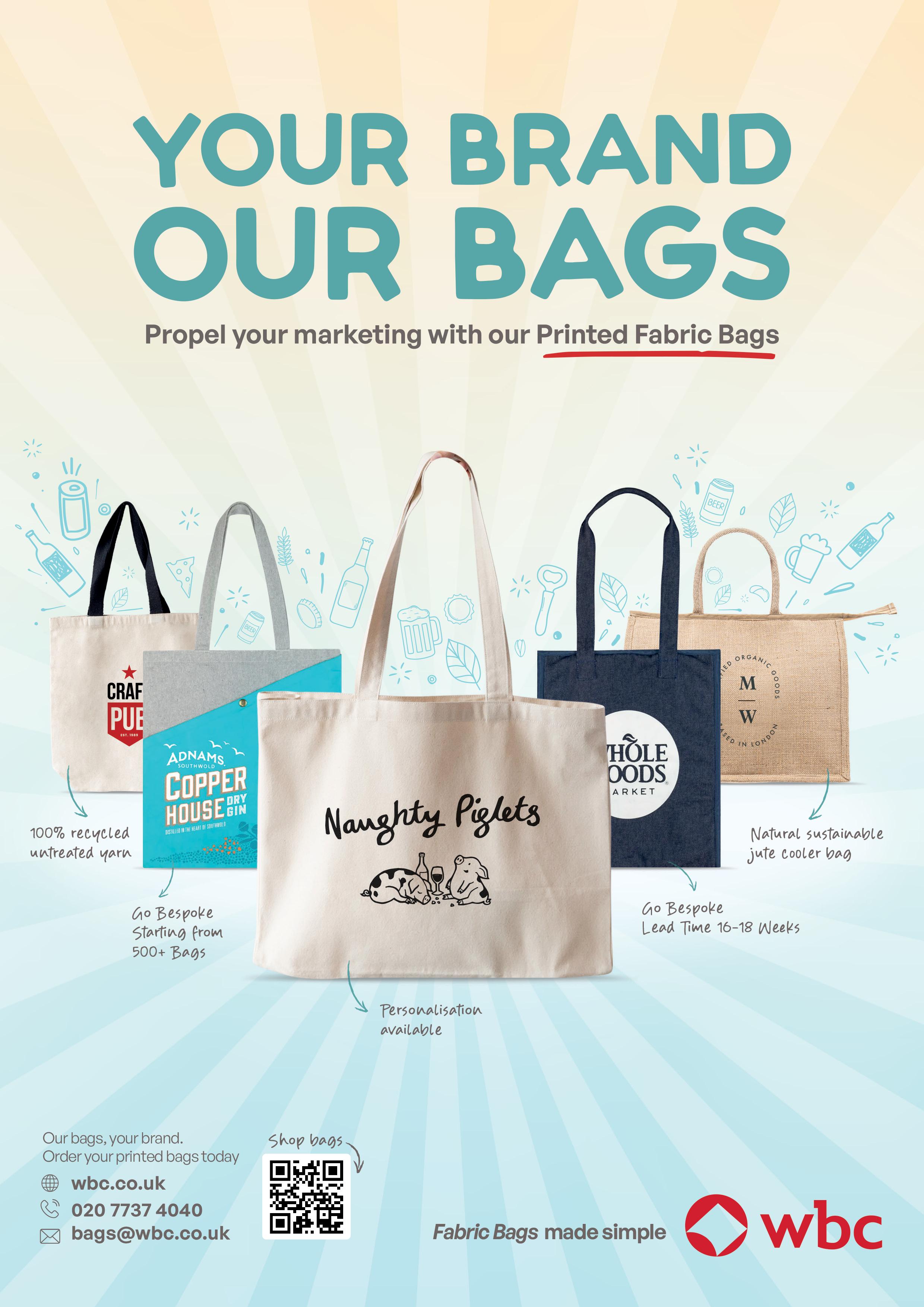

One careful owner: now Thornbridge can show us what a Burton union can do

Middle age often drives people to make impulsive purchases, an electric guitar perhaps, or a potter’s wheel. Such purchases are often guided more by emotion than rational thought. The buyer might have little clue what to do with them, or even any idea of what they want to achieve, let alone any control over what comes out the other end. All they know is that they’ve just got to have them.
It would be stretching a point to suggest that the team at Derbyshire’s Thornbridge brewery lack the skills to conquer one of the legendary union system sets that they’ve just bought from Marston’s, but there’s no doubt that the emotional heft
“A lot of the union systems came about to almost clean the beer, to make it brighter. It polished up the beer”

of owning a bona fide piece of British brewing heritage was a guiding light in the acquisition.
“The motivation was definitely preserving a piece of brewing history,” says co-founder and CEO Simon Webster. “The opportunity of being in charge of a union set was something we really wanted.”
To recap: Marston’s announced in the spring that it was getting rid of the union system at its brewery in Burton upon Trent, arguing that the complex arrangement of wooden barrels and pipes it used for making dwindling amounts of its Pedigree ale was no longer viable. The move threw the nerdy beer world into mourning as it was (almost certainly) the last remaining 19th century iteration – of what was once a widely used system – in the world.
Carlsberg has a UK partnership with Marston’s and is the UK importer of Brooklyn beers from the US, whose brewmaster Garrett Oliver is also a mate of the folk at Thornbridge. When Marston’s
made it evident it would be willing to let one of the sets go to a new home, Oliver brokered the deal.
The set bought by Thornbridge comprises six barrels out of 264 in total. Most of the remainder will be scrapped, though it’s thought a portion will become the talking point of a conference centre.
“It’s been a good year and we’re grateful to get it under our belt,” says Webster, who admits the brewing team didn’t really know what to do when they first got their hands on it.
“No, we didn’t. We were helped by the coopers from Marston’s but we did understand the principle.”
The first beer to be run through the apparatus was its flagship Jaipur ale, to give the team the clearest idea of what impact on a beer’s profile using the kit might give.
“It hasn’t altered it massively, but it seems to have softened it and rounded it. If you look back over time, a lot of the union systems came about to almost clean the beer, to make it brighter, at a time when people began drinking out of glass. It polished up the beer much better than when you were drinking out of a tankard.”
But Thornbridge has no long-term designs on using the system just to make slightly shinier versions of the beers it already brews.
It’s planning on lots of one-off collaborations but has already got the ball rolling with one of its own, a British-style IPA that will be made only on the set, named – with refreshing straightforwardness in an age when beers can be called things like Brewing Projekt Chomp Chomp Mixed Berry Cheesecake Sour – The Union India Pale Ale. Happily for the off-trade, the beer will be in bottleconditioned form as well as cask, at a slightly punchier 7% abv than the 6.5% on draught.
“That’s a style of beer which you don’t see that much of these days,” says Webster. “A lot of the work we do on IPAs is probably on American iterations, rather than an English style.”
It seems a fitting use for a genuine piece of British brewing history.

It’s one of the most diverse and dynamic regions in France – and for us in the UK, it also happens to be one of the nearest. Interloire’s recent masterclass in London, which featured wines seeking representation as well as a few which are already imported here, provided a useful overview of what merchants can expect to find in the Loire valley
It’s been said that the Loire valley is to be experienced, never fully known.
You could spend a lifetime getting to grips with its myriad terroirs, appellations, grape varieties and styles – and even then there’d be a nagging sense you’d only just scratched the surface.
So a two-hour masterclass involving 11 wines, for an invited audience of UK merchants, was perhaps an ambitious challenge for wine educator and Loire enthusiast Mike Knowlden. Yet by the end of the session, guests felt their knowledge of this dynamic region had been refreshed, and they left thirsty for more Loire discoveries.
The Loire valley is a more complex region than some might imagine. Although it loosely follows the path of the 1,000kmlong river, the 42,000-hectare vineyard area is subdivided by many tributaries, each creating individual terroirs that, over the centuries, have given birth to wine styles of pretty much every description. Interloire, the body hosting the London tasting, represents 34 PDOs and one PGI. “There is so much more to the Loire than meets the eye,” says Knowlden. “And I

truly believe it offers great value across the board.”
Our tasting begins with a Crémant de Loire from Raphael Midoir, an electrifying Chardonnay/Chenin Blanc with a smoky, savoury note and a deliciously bitter finish. “There is quite a range of Crémant de Loire styles now,” says Knowlden. “Producers are experimenting with a range of dosages, which has created more diversity on the market. Brut nature is an excellent way to go as we see greater ripeness in warmer vintages.”
The theme continues with BaudryDutour La Chapinère 2022 from Touraine, the only Sauvignon Blanc in the line-up. “What we’re seeing now, with a warming climate, is that Sauvignon Blanc can now be made in quite a range of styles within the region,” Knowlden reports. This example sits nicely in the middle ground, being neither excessively herbaceous nor too tropical in profile.
No tasting of Loire wines would be complete without at least one Muscadet de Sèvre-et-Maine Sur Lie, and the one we sample from L’Audigère par Jean Aubron is classic in style. It exhibits the ripeness of a warm year, with plenty of apple character, and there’s a delicate leesy note too.
The advent of Crus Communeaux has created a real buzz in Muscadet, creating a new tier of wines from seven specific villages, all made with stricter rules than elsewhere in the area. There’s one in our tasting: Domaine Lieubeau’s Cru Clisson, which spends 24 months on its lees and emerges creamy and full-bodied but still with the citrus acidity that makes so many Muscadets classic seafood partners.

We move on to Saumur Blanc, with a Chenin Blanc from Domaine des Sables Verts – an estate, like so many in the tasting, which is in conversion to organic status (others we encounter are already certified, and in some cases biodynamic). The wine is an excellent advertisement for how well Chenin can respond to barrel fermentation and a little oak ageing. It’s generous and bready, but retains its finesse.
Our second Chenin Blanc, Domaine Bellivière’s Les Rosiers, is from Jasnières, a small AOC of just 20 producers. This particular wine usually has between 17 and 22 grams of residual sugar and it conjures an evocative aroma of windfall apples. It could work well as an aperitif, with spicy Asian food, or even with lowersugar desserts, Knowlden suggests.
ageworthy wines.” As winemaking in the region has developed – and the climate has warmed – many Loire producers have dialled down the greener characters in their Cab Franc. But the region’s style still has a typical crunch that can be notably absent among new world rivals.
Next, Domaine de la Commanderie Tradition 2018 is aged in old oak and is a polished and powerful example of Chinon, with big, black-fruit flavours and a savoury edge on the finish.

The tasting’s sole rosé is a Cabernet d’Anjou from Domaine du Petit Clocher. It’s the delicate salmon pink colour that consumers assume denotes a dry profile. But this one packs 25 grams of sugar, and it’s a style that’s wildly popular in France. The acidity is a good foil for the sweetness, and the character of its constituent grapes – Cabernets Sauvignon and Franc – is on show too, despite such a short, overnight maceration.
Now Cabernet Franc takes centre stage, in the form of three very contrasting styles. From Bourgueil, we try Domaine Catherine & Pierre Breton’s Avis de Vin Fort 2023, an organic and extremely low-sulphur wine that’s so pale it could almost be classified as rosé. There’s hardly any tannin, just bright, redfruit flavours and a sprinkle of herbs.
The first Chinon we try is Domaine Dozon’s Le Grand Saut 2020, which shows a well-judged balance of pyrazines and ripe fruit, with a darker edge to the finish.
“I think Loire Cab Franc is in such a good place at the moment,” says Knowlden.
“You can get very light, vin de soif, glouglou styles but also rich, more tannic,
We wrap up with Coteaux du Layon, a style that Knowlden reminds us has a minimum residual sugar requirement of just 34g/l. “So they could effectively be medium dry wines, meaning that different food options open up,” he says.
Noble rot gives Coteaux du Layon wines with hallmark marmalade and ginger notes, but when botrytis doesn’t make an appearance – as is the case with Philippe Delesvaux Passerillé 2018 – the Chenin Blanc grapes are simply allowed to dry out on the vine. The wine ferments naturally and very slowly, emerging with a fruity, rather than unctuous, palate. It is, as Knowlden suggests, a perfect way to end a meal – or, in this case, a very enlightening tasting.

Cabernet Franc is the most important variety, with 30% of plantings, followed by Chenin (19%) and Melon de Bourgogne (17%)
There are 2,700 wine growers , 410 négociants and 16 cooperatives spread across the region
80% of estates are committed to organic farming or another form of organic certification
37% of the Loire valley's output is white, 29% rosé, 18% red and 16% sparkling
The UK is the Loire valley's second most important export market, after Germany, accounting for 18% of volumes in 2022
Based on 2022 figures
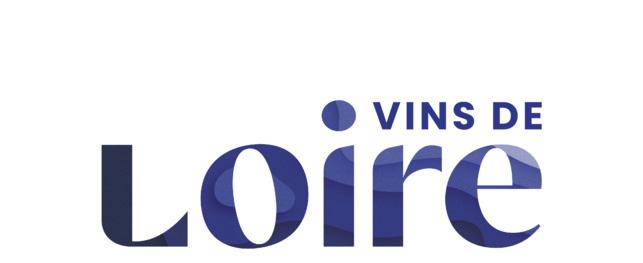
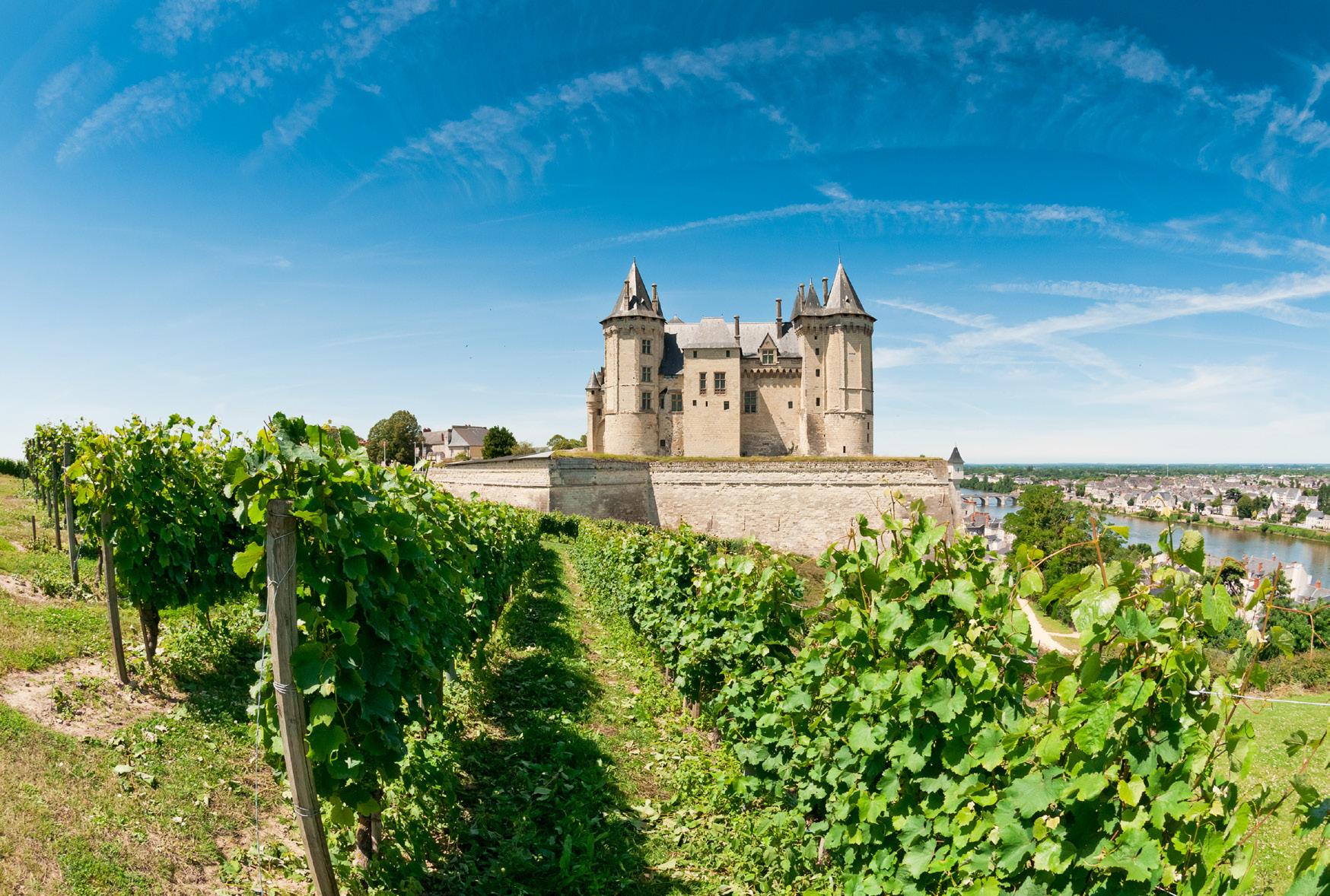



Victoria is home to world-renowned food scene
Joe Wadsack is heading back to Victoria this summer for the first time in more than a decade, and his excitement at the prospect is palpable. “I’ve got a lot of catching up to do,” he says.
Wadsack fell in love with the people, wines and landscape of the Australian state on extensive tours of its vinelands at a time when the region was yet to achieve the level of global recognition that it enjoys today. It is, he says, a dynamic, creative and experimental place for winemaking. And yet he has a feeling – and a hope – that, fundamentally, it won’t have changed too much.
“What I love about Victoria is, if you talk about it in broad strokes, it’s a one-stop shop for wine,” he says.
“Victoria is the southernmost state in continental Australia, and arguably the most fascinatingly complex, with a history of wine production that dates back more than 170 years.
“It has 21 wine regions – including Mornington Peninsula, Yarra Valley and Rutherglen – meaning it offers the widest range of climates of any state in the country.
“If you go to the Mornington Peninsula, and around Port Phillip Bay, then it’s perfectly moderate, like 20˚C – which is a little bit cooler, on average, than Bordeaux. Head anti-clockwise, you go through Gippsland, which has got some super cult producers of Pinot Noir and Chardonnay, then you go up through Strathbogie Ranges, which is where I think Domaine Chandon first bought a lot of their fizz grapes.
“You’ve got this incredible diversity of altitudes and soils and climates, even just around the rim of the bay. There are small producers who recognise they have something very special on their doorstep.”
Wadsack isn’t the first to observe that, because Victoria is so diverse, it’s not straightforward to market it under a single, unifying banner. And yet this patchwork of individual subregions is a key part of its character and its appeal.
“Every time I’ve been to Victoria, all the different villages and towns, you feel that each is a very distinct community on its own,” he says. “Just like in France, producers relish the fact that they’re doing something different to the guys over the road.”
world-renowned regions like Yarra Valley, Mornington Peninsula and Rutherglen. The scenery is beautiful, the scene is buzzing and there’s a spirit of creativity. No wonder wine writer Joe Wadsack can’t wait to go back
Wadsack feels that, while some regions tend to be quite rigid and university-led in their approach to innovation, Victoria winemakers are more inclined to learn from their own experimentation in the vineyard and cellar.
“It happens in a more artisanal way, with people taking risks,” he says. “I think there’s a sense in some regions that you learn to make wine by avoiding mistakes; that the goal is to make a wine that’s not faulty. That’s also borne out by the judging in some state competitions. And I think that’s to their detriment.
“In Victoria – even the Royal Melbourne Wine Show itself – I feel it’s a little bit more forgiving of eccentric winemaking. They’re more intellectual about it. I think that’s the nature of small producers: that character and difference and eccentricity is what bears you out, rather than being consistent and steady.”

That’s not to say that Victoria is in a constant state of chaotic reinvention. Far from it. As Wadsack observes, the state’s Chardonnay holds its own against the most eye-wateringly priced rivals from Burgundy these days, and has settled on a style template that is now studied by winemakers from far beyond the state border. To reach that sort of level in such a short space of time has been a remarkable feat.
Victoria’s wine culture now feels embedded within the lifestyle of what Wadsack feels is “Australia’s most beautiful state”.
“If you’re going to go on holiday somewhere in Australia, Victoria is the place you’d want to head for,” he says. “You’ve got incredible Alpine forests; up in Mount Buller you can go skiing in winter, you’ve got amazing beaches, and everything in between.”
“There are small producers who recognise they have something very special on their doorstep”
Sponsored feature
Find out more at winevictoria.org.au
Then, of course, there is the food scene that radiates from Melbourne. “It seems to me that the vast majority of really successful Australian chefs started in Melbourne,” Wadsack says. “Melbourne has the largest population of Greek people outside Athens, and there’s a culture of Asian foods as well. It’s pretty cool. There’s a little bit of Portland, Oregon about it.”
Wadsack will be renewing acquaintances and brushing up on his Victoria wine knowledge in a month or two. For independent merchants, there are already plenty of wines to explore, and stories to share, from this exciting and pioneering state.
Taste some wines from Victoria with
Joe is teaming up with The Wine Merchant to lead a whirlwind tour of Victoria at Jimmy’s BBQ Club on London’s South Bank on Wednesday, September 4.
For more information, email Charlotte Gingell: charlotte@winemerchantmag.com
richmond wine agencies
The Links, Popham Close
Hanworth
Middlesex TW13 6JE 020 8744 5550 orders@richmondwineagencies.com

@RichmondWineAG1

@richmondwineagencies

Founded by Varun and Jamie, with nearly 20 years experience in the drinks trade.
Every bottle has been engineered to be quintessential, perfect for a specific serve and highly premium. The ideal range of spirits for those looking to make cocktails or mixed drinks at home with minimum fuss.

The range includes a London Dry Gin, Rosso Vermouth, Vodka and British Kummel. And now introducing their Mixed Negroni. Please contact Mark, Julia or Tim for details.
** BUY 6 BOTTLES AND GET 1 FREE **
(Offer excludes Mixed Negroni)
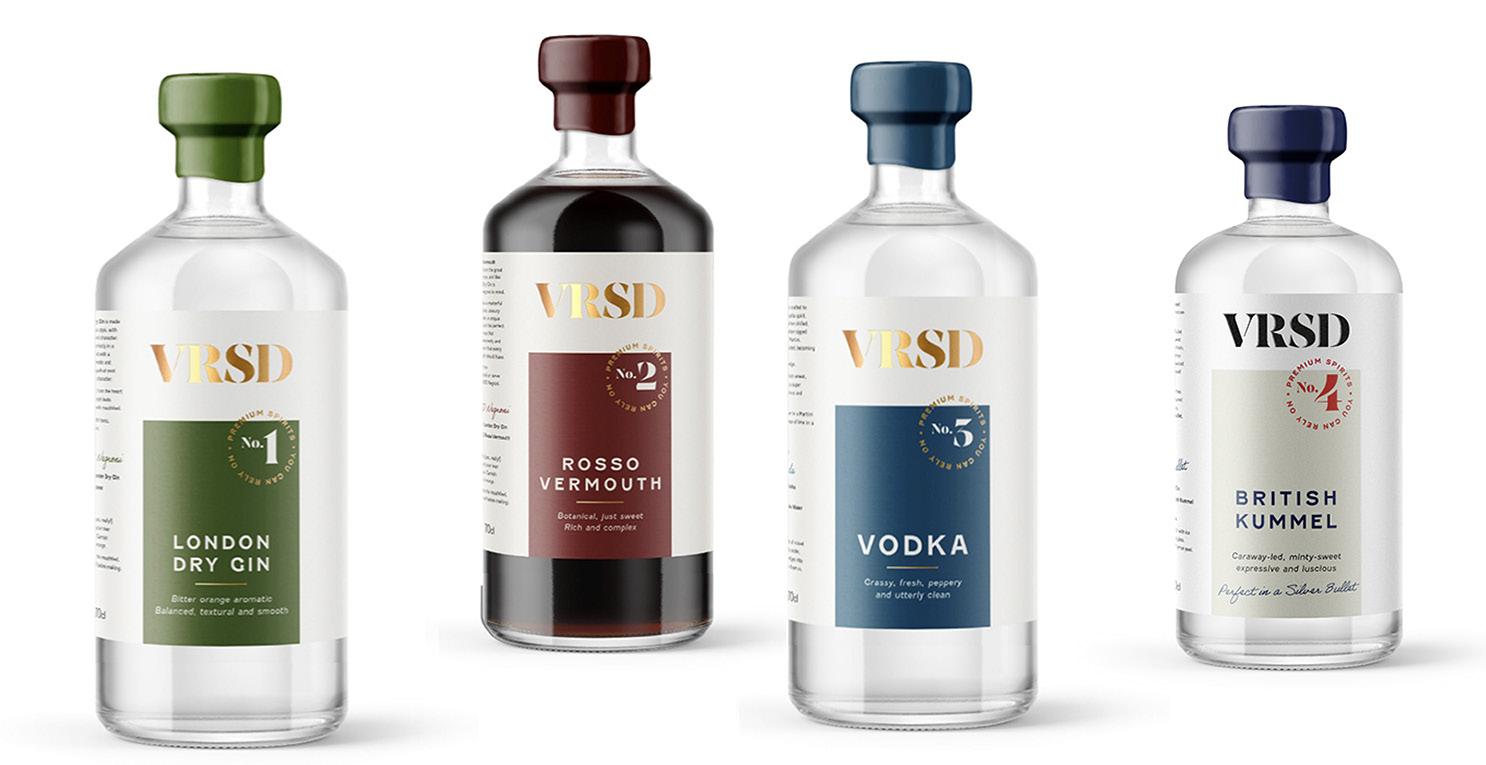
28 Recreation Ground Road
Stamford Lincolnshire PE9 1EW 01780 755810
orders@abs.wine www.abs.wine

@ABSWines













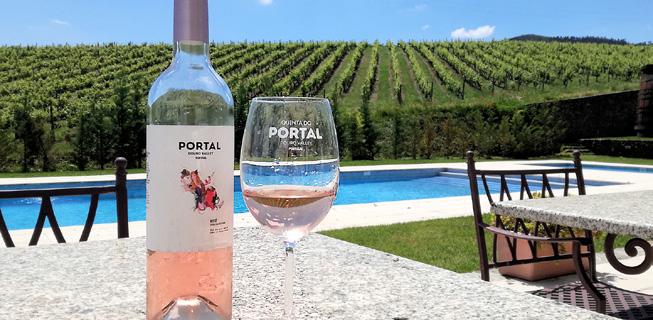



12-14 Denman Street
London W1D 7HJ
0207 409 7276
enquiries@louislatour.co.uk www.louislatour.co.uk

@louislatouruk


hatch mansfield
New Bank House 1 Brockenhurst Road
Ascot Berkshire SL5 9DL 01344 871800
info@hatch.co.uk
www.hatchmansfield.com

@hatchmansfield
Discover the wines from McHenry Hohnen, nestled on the southern edge of Margaret River, Western Australia, where you will find founder Murray McHenry and head
winemaker Jacopo Dalli Cani crafting some of the greatest Chardonnays of the world.
The focus is on vineyard sustainability and biodynamics, creating ageworthy wines from three single vineyard sites of Burnside, Hazel’s and Calgardup.
World Class Chardonnays
Burnside Vineyard Chardonnay – 99 points, Vinous, Angus Hughson
Hazel’s Vineyard Chardonnay – 96 points, Vinous, Angus Hughson
Calgardup Vineyard Chardonnay – 93 points, Vinous, Angus Hughson
For more information, contact sales@louislatour.co.uk or scan the QR code.


Get in touch with your account handler if you would like to receive complementary neck tags
Kleine Zalze | South Africa
Project Z Riesling, 2021
Esporão | Portugal
Reserva White Organic, 2022
M.CHAPOUTIER | France
Bila-Haut Occultum Lapidem Blanc, 2020
Louis Jadot | France
Pernand-Vergelesses 1er Cru Clos de la Croix de Pierre Rouge, 2017
Oatley Wines | Australia
Hancock & Hancock Shiraz Grenache, 2019










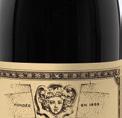




Come and taste them at our portfolio tasting on 16th September, at 116 Pall Mall, London To register please email events@hatch.co.uk
The Woolyard
52 Bermondsey Street
London SE1 3UD
020 7840 3600
info@mentzendorff.co.uk
www.mentzendorff.co.uk



Champagne Bollinger is delighted to announce the release of the PN VZ19, the next edition in the Bollinger PN series. Each new edition of the Bollinger PN cuvée brings with it a singular and contemporary vision of the Maison’s terroir and expertise, acting as a symbol of the union between tradition and innovation. Every one of these new interpretations represents Bollinger’s vision of Pinot Noir and its terroirs.
Each new cuvée—the union of a base year (in this case 2019) with a blend of terroirs (predominantly Verzenay) and reserve wines—brings new properties to light, revealing unexpected nuances and unique sensory expressions in a fresh demonstration of our expertise and savoir-faire.
For more information, please contact your Mentzendorff Account Manager
buckingham schenk
Unit 5, The E Centre
Easthampstead Road
Bracknell RG12 1NF
01753 521336
info@buckingham-schenk.co.uk
www.buckingham-schenk.co.uk


@BuckSchenk
@buckinghamschenk



4 Pratt Walk, Lambeth
London SE11 6AR
0207 735 6511
www.thormanhunt.co.uk

@thormanhunt
sales@thormanhunt.co.uk

walker & Wodehouse
109a Regents Park Road
London NW1 8UR
0207 449 1665
orders@walkerwodehousewines.com www.walkerwodehousewines.com


@WalkerWodehouse


As temperatures rise and the days stretch longer, we welcome the season of refreshing drinking and vibrant flavours. Here are our top summer wine trends.
Refreshing whites: White wine is a clear favourite among wine drinkers in the summer, particularly Chenin Blanc and Pinot Grigio. Alois Lageder’s Porer Pinot Grigio is a fitting example.

French and Italian rosé: Although Provence rosé is showing no signs of a dip in popularity, Italian rosés offer a diverse array of styles to suit every palate. We love the Jeio Prosecco Rosé NV
Chilled reds: Varieties like Gamay, Pinot Noir and Grenache are expected to shine when chilled and Balfour’s Hush Heath Pinot Noir is no exception – originating from Burgundy clones that were planted on the Hush Heath Estate.
Portuguese wines: Although still a niche category, sales of Portuguese wines in the UK are growing. Casa de Mouraz Branco from the Dão region is refreshing with excellent acidity, characteristic of the region. It’s made from a blend of 15 varieties.
Holiday destinations: The resurgence of wanderlust post-pandemic is leaving its mark. We recommend Santo Santorini Assyrtiko 2022 from the popular Greek island of Santorini.
Fells House, Station Road
Kings Langley WD4 8LH
01442 870 900
For more details about these wines and other wines from our awardwinning portfolio from some of the world’s leading wine producing families contact:
info@fells.co.uk www.fells.co.uk

@FellsWine

je_fells

Mulberry House Parkland Square
750 Capability Green
Luton LU1 3LU
01582 722 538
sales@hnwines.co.uk www.hnwines.co.uk



@hnwines



The Old Pigsty, Rose Cottage Church Hanborough OX29 8AA 01993 886644
orders@delibo.co.uk www.delibo.co.uk

Mornington Peninsula
“Sustainable viticulture, top grafting with new clones and cane pruning have been integral in the development of our winemaking over the last two decades. The tiny quantity of the Cri de Coeur label perfectly showcases the pinnacle of our viticultural and winemaking efforts spanning over 40 years and two generations” – Rollo Crittenden
A Crittenden cellar rat in the 90s –donning the winery “footy” shorts for daily Pinot treading and consequent hose-down – Delibo founder James Fleetwood is honoured to represent this incredible family.
The UK allocation is 48 bottles. Talk about taking one for the team.
“Do you feel lucky?”
Contact Delibo Wine Agencies and find out …
The computer system for drinks trade wholesalers and importers
16 Station Road Chesham HP5 1DH
sales@vintner.co.uk www.vintner.co.uk





020 7720 5350
order@libertywines.co.uk www.libertywines.co.uk

@liberty_wines



top selection
23 Cellini Street
London SW8 2LF
www.topselection.co.uk info@topselection.co.uk
Contact: Alastair Moss
Telephone: 020 3958 0744


@topselectionwines
@tswine

Pedro Parra: for the love of Itata and granite (and jazz)
Renowned soil and vineyard mapping expert Pedro Parra’s influence on the understanding of Chile’s complex and diverse terroirs has been considerable. Under his own label, Pedro champions the old bush vines of Itata, grown on granitic soils. Pedro identified the subregion of Guarilihue, with its elevation and very poor soils of granite, quartz and clay, as ideal for premium Cinsault and his wines demonstrate wonderfully this variety’s personality from different sites.
Another great love of Pedro’s is Jazz and his three ‘Premier Cru’ Cinsaults are named after legendary musicians Freddie Hubbard, John Coltrane and Thelonious Monk. The 2021 vintage ‘Hub’ is sourced from granitic soil with a high iron content, giving the wine a beautiful mineral quality, the elegant and perfumed ‘Trane’ 2021 comes from shallow granitic soil containing silt and stones, and the ‘Monk’ 2021 from granitic clay soils, lending structure and complexity to this wine.

Pedro’s two ‘Grand Cru’ wines are made with 100% whole-bunch fermented Cinsault, aged in 15-litre foudres. The 2021 ‘Miles’ (after Miles Davis) comes from a 0.3-hectare plot of iron-rich, red, sandy and silt soil, and is elegant and controlled. From a 0.2-hectare plot of white soil with very little mineral content, the 2021 ‘Newk’ (after legendary jazz saxophonist Sonny Rollins’ album Newk’s Time) is full of tension, austerity and elegant tannins, a pure expression of heart and soul. These five wines all feature among Tim Atkin MW’s Chile 2023 Wines of the Year.
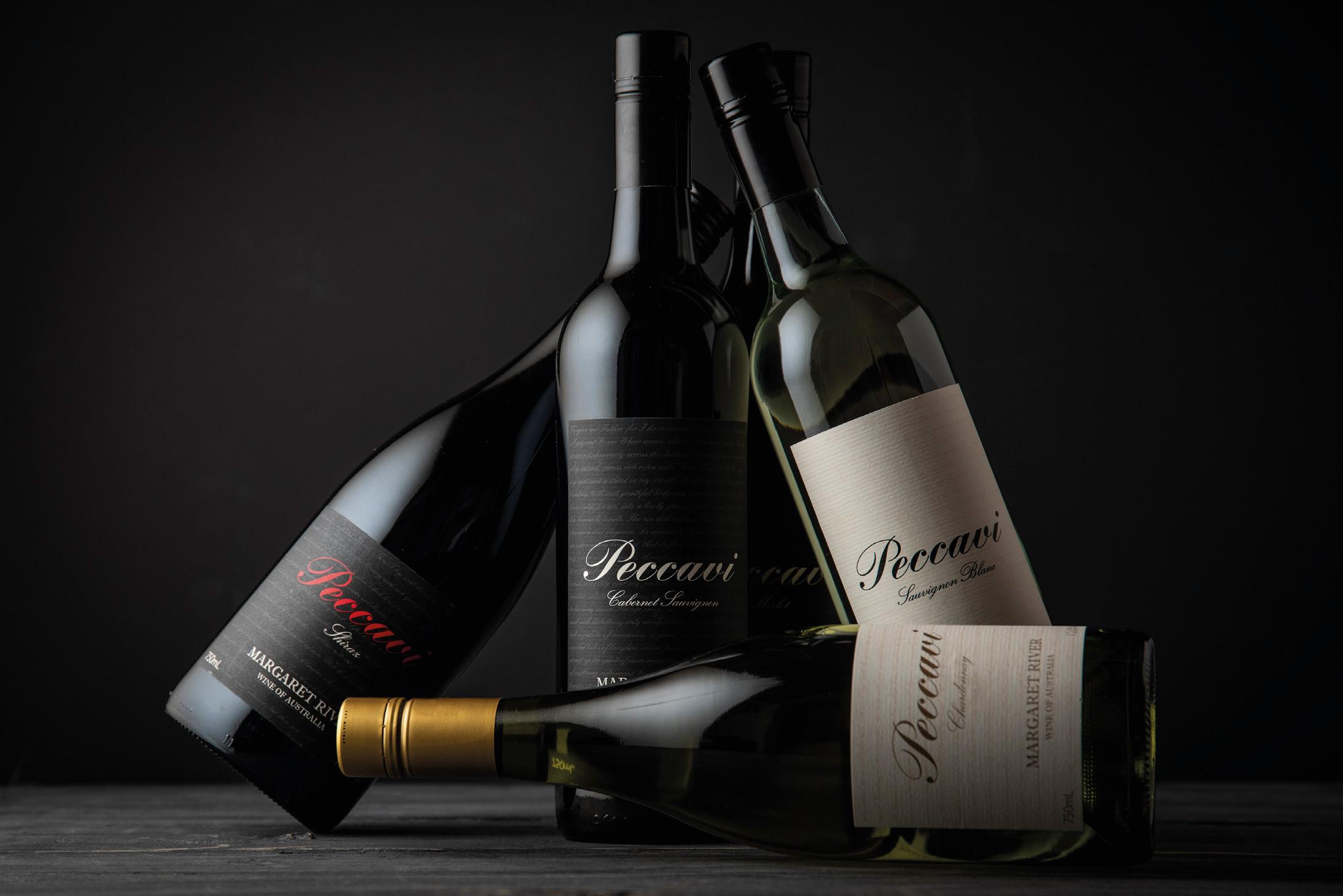
Outstanding boutique wines from the Margaret River, Western Australia
Imported exclusively by Top Selection
“I asked for Lee Scratch Perry’s autograph like a 10-year-old kid”

Norrel is a Scottish-born winemaker and grape grower who has been based in Spain for the past 21 years. His company, El Escocés Volante (The Flying Scotsman) owns over 40 hectares of mainly old vines in the heart of the Sistema Ibérico in Aragón, with a focus on dry-grown, high-altitude and regenerative viticulture.
What’s the first wine you remember drinking?
Asti Spumante. My mum used to buy a bottle sometimes as an aperitif at Christmas. At university I discovered Bulgarian reds and then took a part-time job at Oddbins, which led to a full-scale immersion and the beginning of my wine journey.
What job would you be doing if you weren’t in the wine trade?
Before really getting bitten by the wine bug I always fancied journalism or teaching, but I am a lousy teacher. I remember applying for a postgraduate in music journalism with Prof Simon Frith in 1992, but my proposal to study the evolution of electronic dance music from Kraftwerk
onwards fell on deaf ears.
How do you relax?
Cooking, drinking wine, and when I get the chance I really enjoy walks in the country. Our house is just outside the old town in Calatayud and in two minutes you are walking in the Sistema Ibérico.
The best book you’ve read recently?
I think the last book I really enjoyed was Pure by Andrew Miller.
Give us a Netflix recommendation. My wife and kids are signed up to all sorts of stuff but I have never got into it. I love Radio 4 and the World Service. I think they are some of the last bastions of impartial media with a level of programming and investigation which is untouchable.
Do you have any sporting loyalties? I grew up supporting Dundee Utd – I think the first team to beat Barcelona home and away in Europe.
Who’s your favourite music artist?
I tend to get obsessed with an artist for a month or so and I am horribly retro in
my tastes sometimes. The last two weeks I have been watching lots of XTC videos and interviews on YouTube. During Covid I became obsessed with Khruangbin. If there is something that I go back to over and over again it is Parliament-Funkadelic.
Any superstitions?
I don’t cut my nails on a Sunday – a nonsensical habit I inherited from my father.
Who’s your favourite wine critic?
That depends who has given us the most points most recently.
What’s your most treasured possession?
Any of the 40-plus hectares of vineyards we have bought, recovered and planted. As first-generation grape growers and wine producers we don’t take for granted any inherited land or wealth. I still have to pinch myself when I walk into our vineyards and realise what we have.
What’s your proudest moment?
The typical stuff. Becoming a father, getting married, becoming an MW in 2000, getting my postgrad in Viticulture & Enology in New Zealand.
What’s your biggest regret?
That my father did not live longer to see what we have achieved. I was/am a bit hyperactive/ADHD/dyslexic and was a bit of a handle when I was younger. Supposedly my father addressed the family saying that one day I would surprise them all, and it would have been nice to share some milestones with him a bit later on.
Who’s your hero?
Not sure if I have any really. I remember waiting at Barcelona airport in 2006 and out walked Lee Scratch Perry. I asked for his autograph like a 10-year-old kid.
Any hidden talents?
I am a pretty decent cook when I put my mind to it. I normally beat people hands down when it comes to name that tune. I will normally guess a song within a couple of seconds, unless it is anything post-1994.
What’s your favourite place in the UK?
I will always have a soft spot for Edinburgh as it’s where I spent most of my formative years in Oddbins. I met my wife there and our first son James was born there.
If we could grant you one wish … To leave the world happy.
